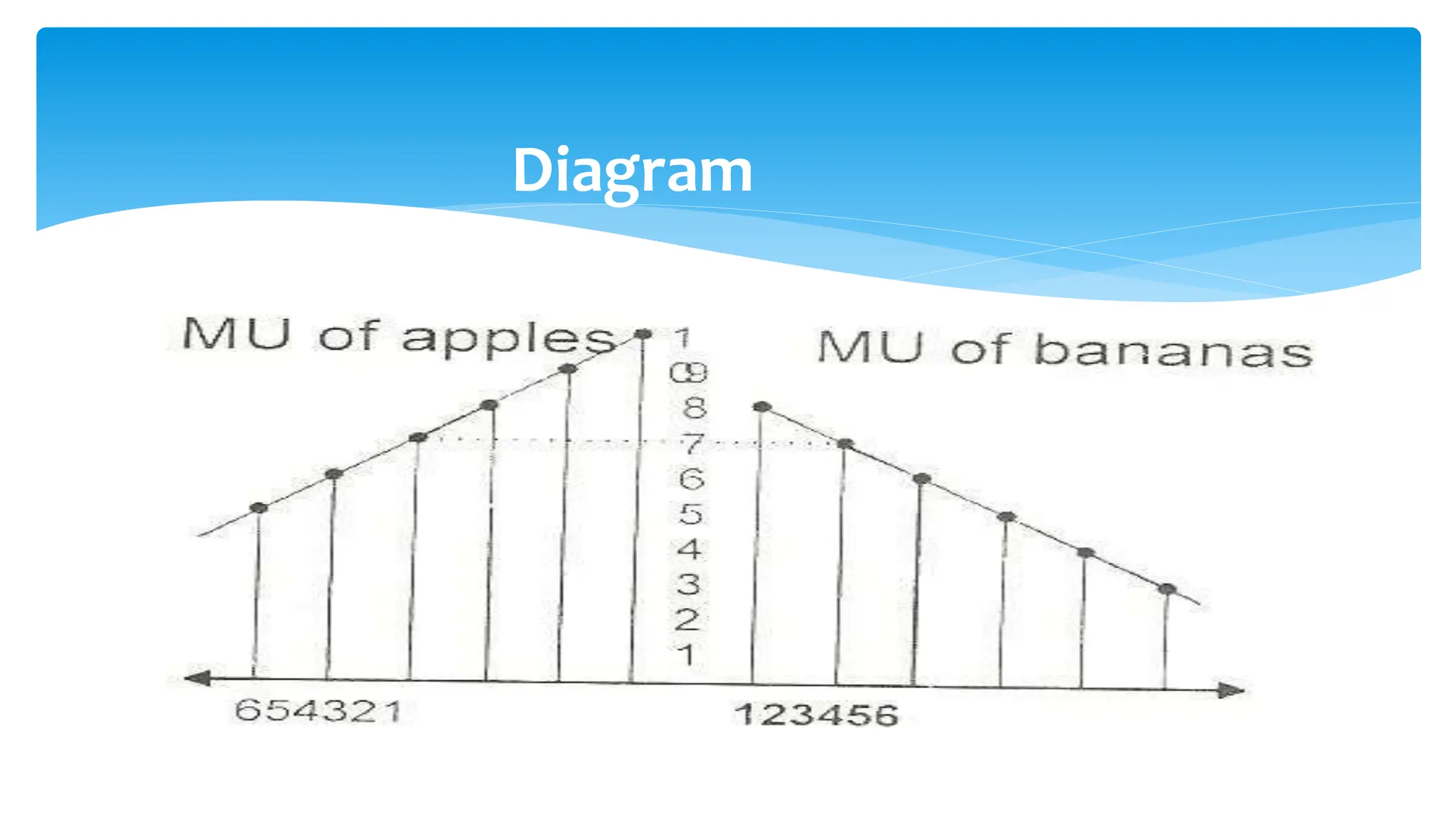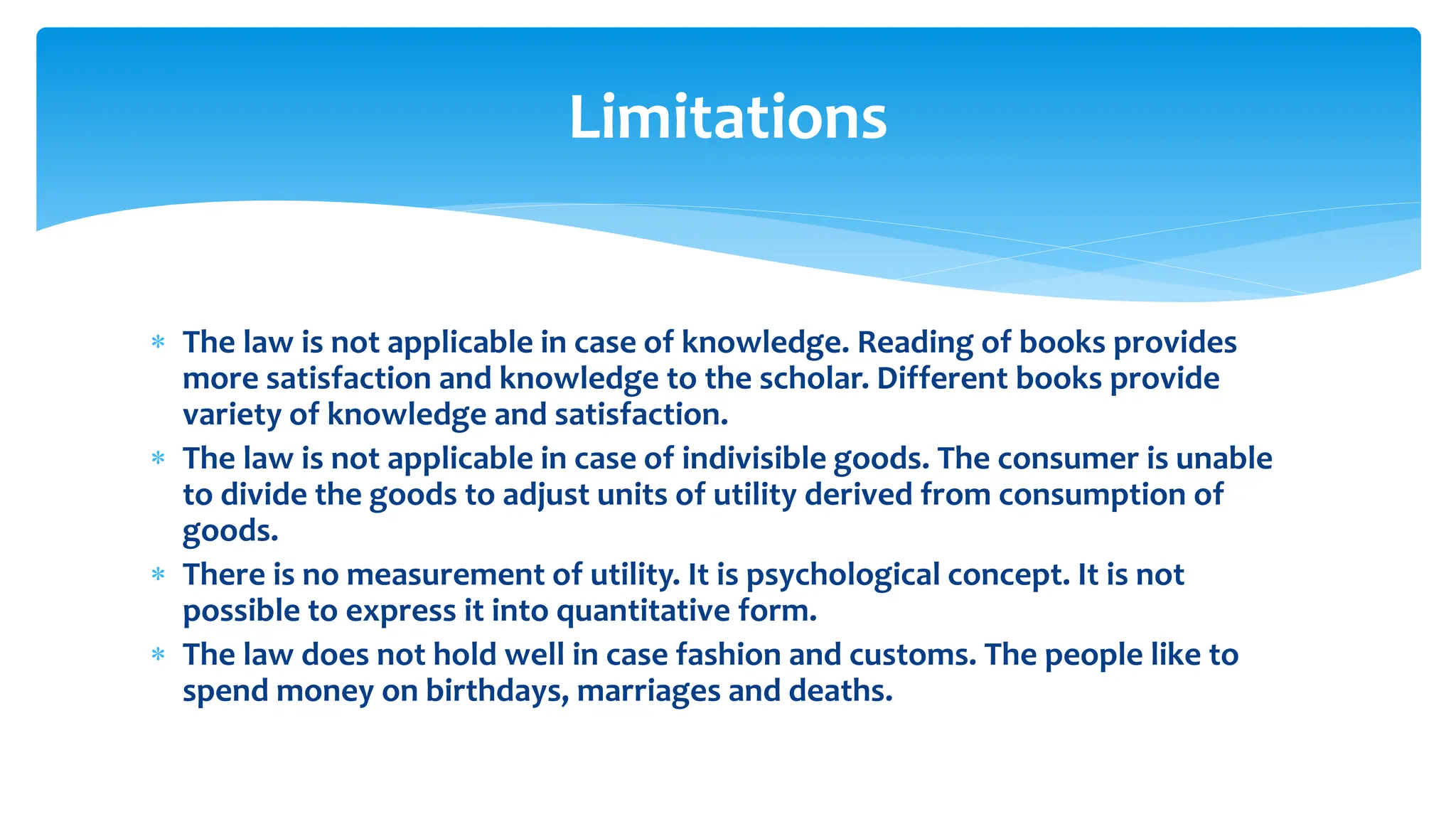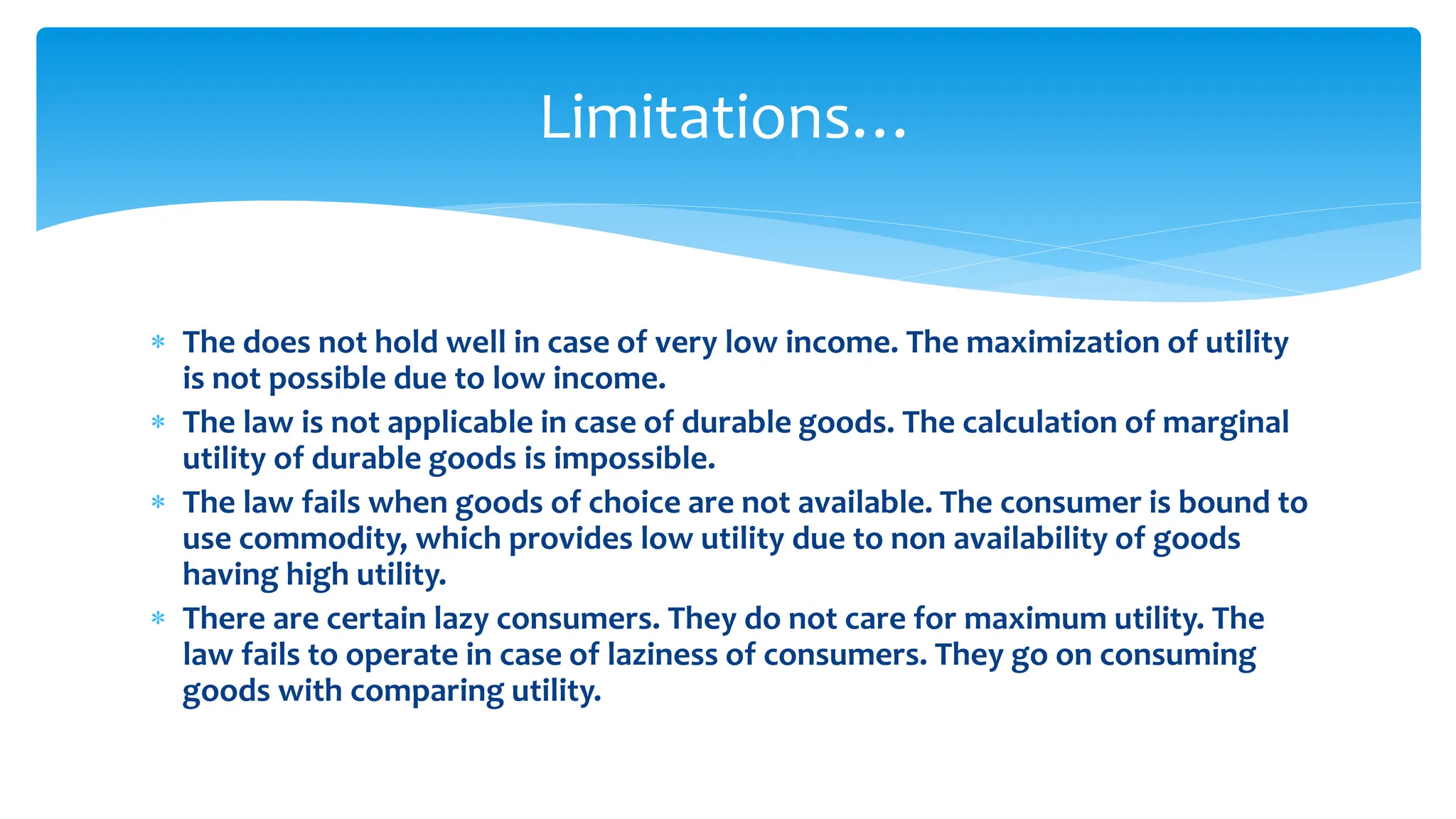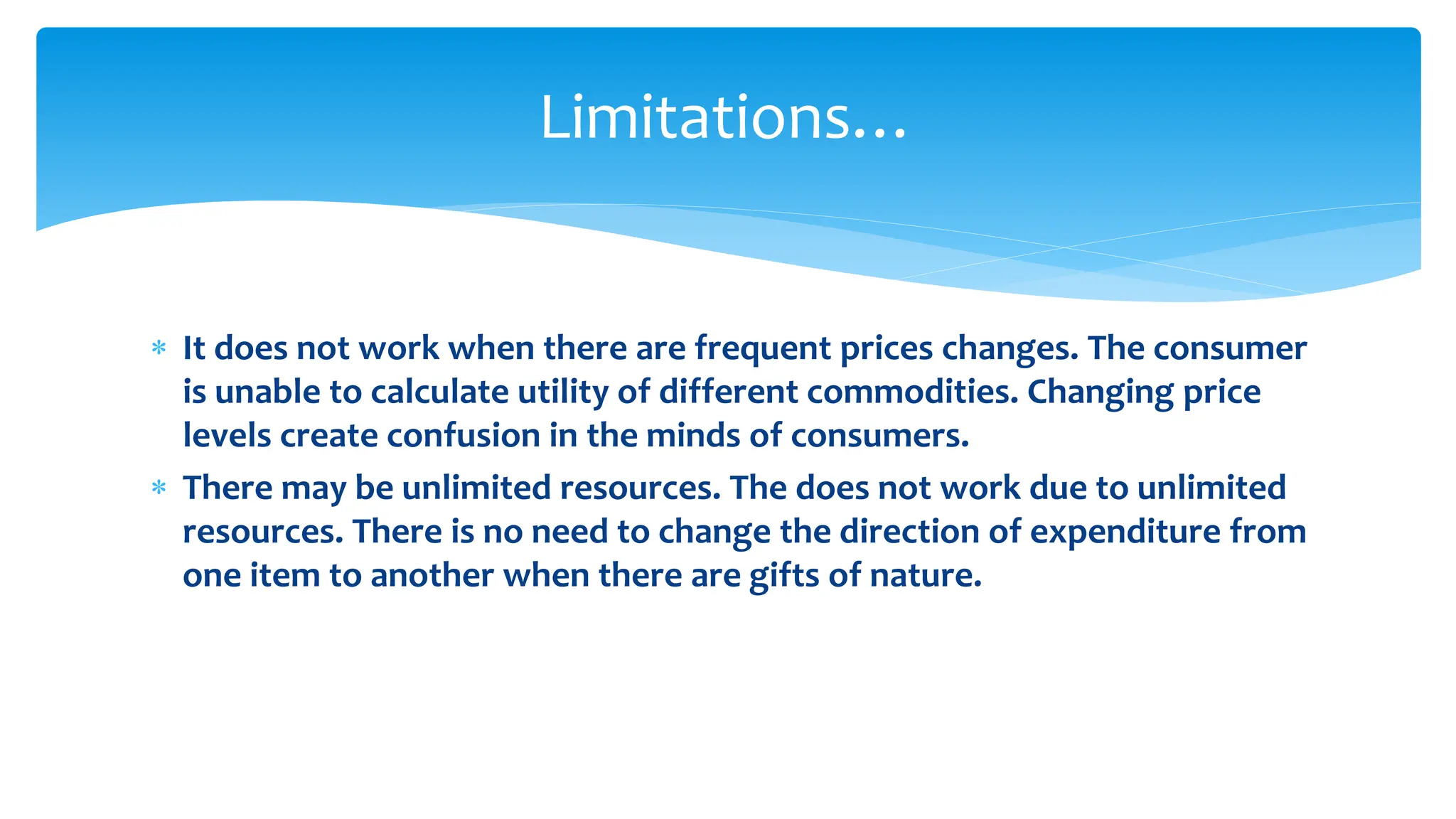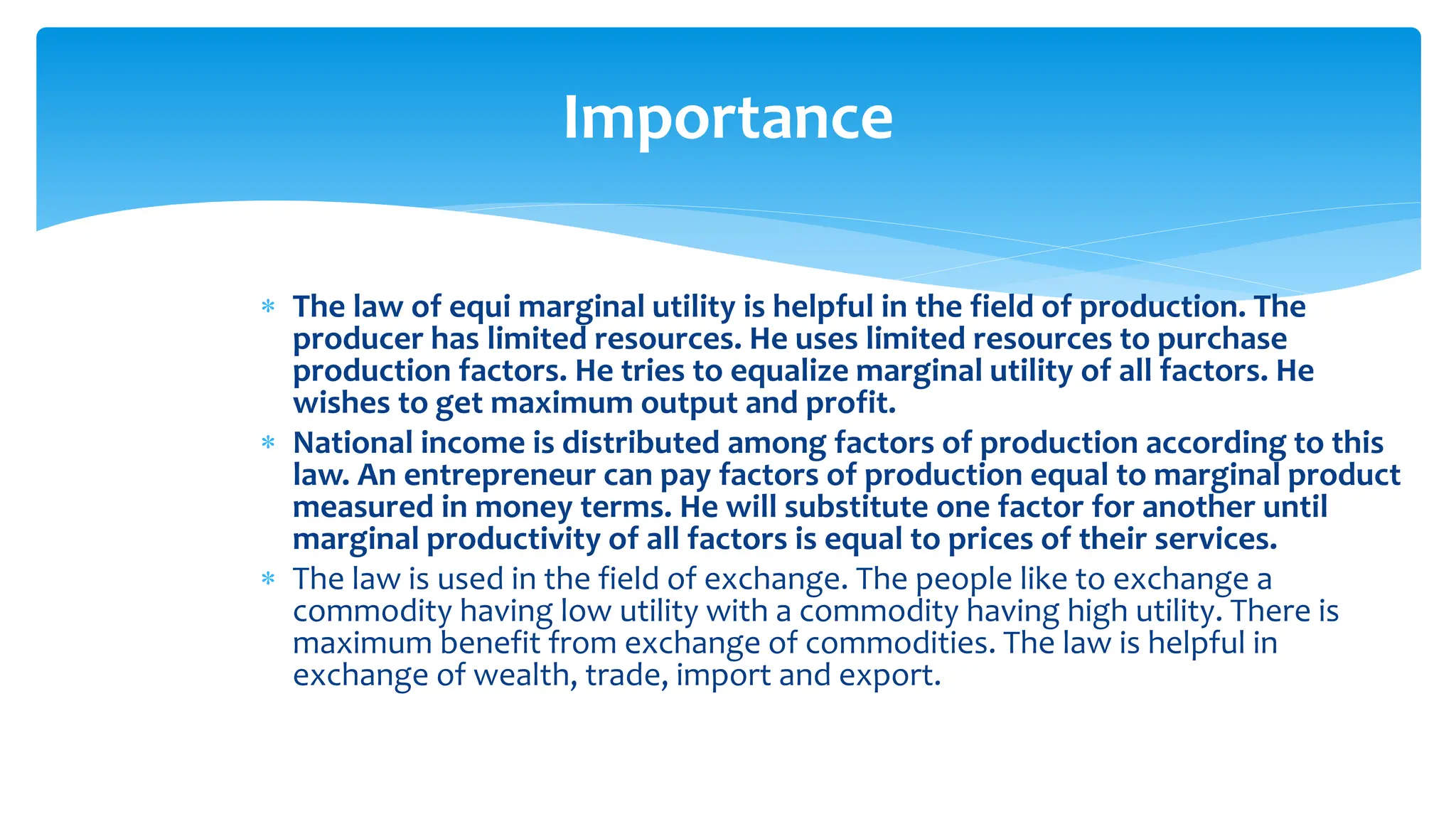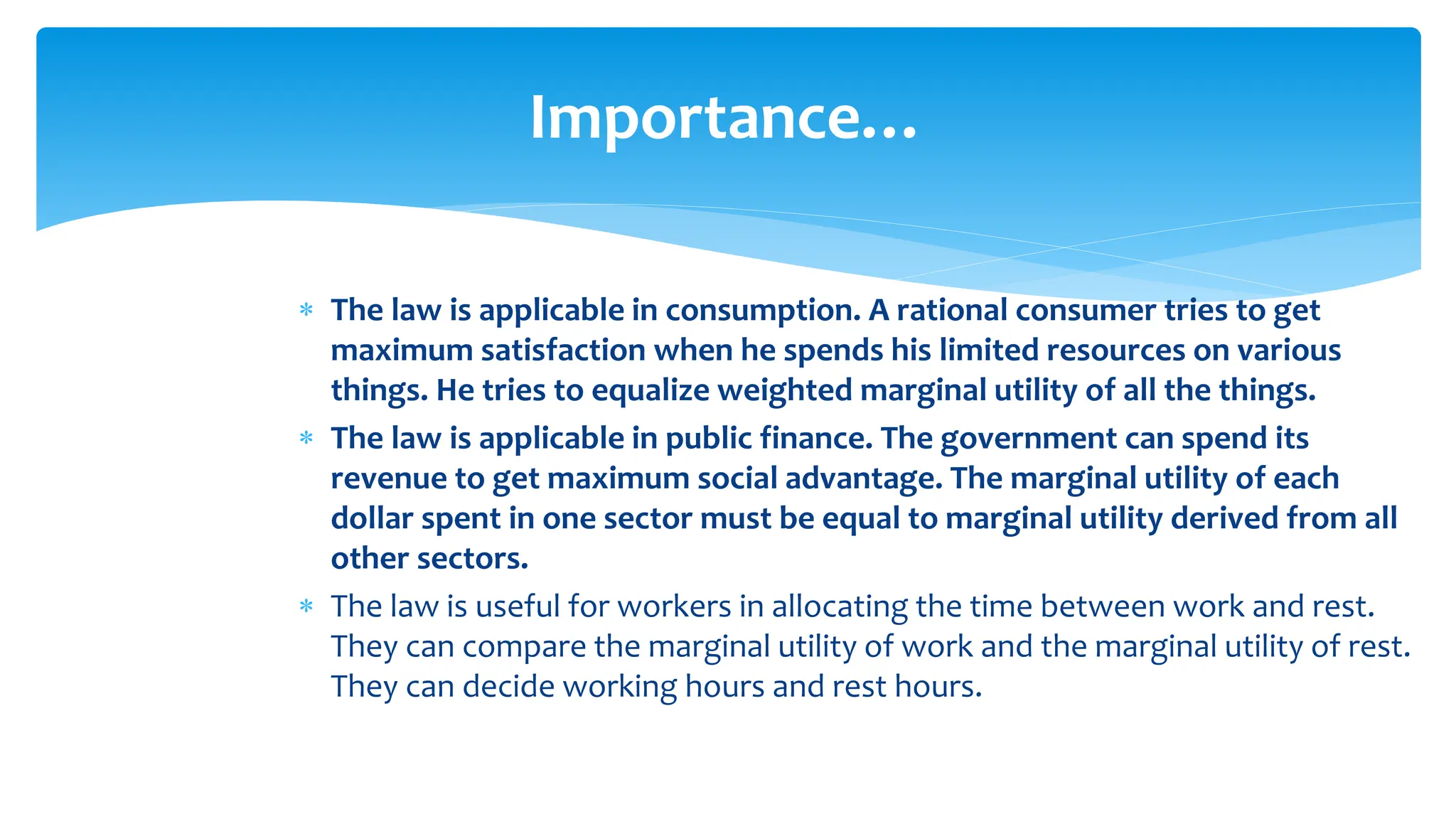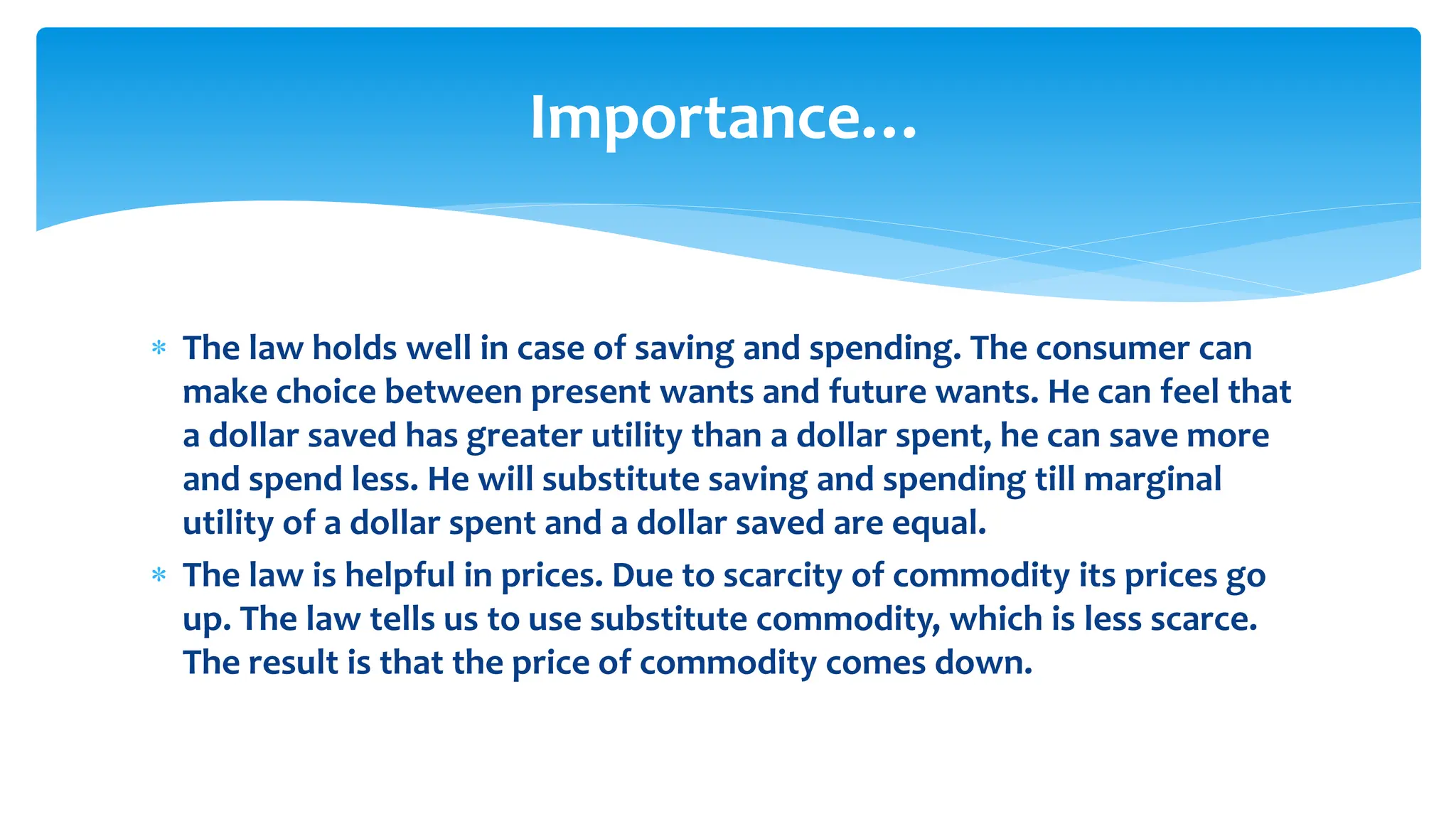The document discusses the concept of utility in economics. It defines utility as the satisfaction derived by a consumer from consuming a good or service. It then discusses:
1) The law of diminishing marginal utility, which states that as a consumer consumes more of a good, the marginal utility of each additional unit decreases.
2) The different types of utility - total utility, marginal utility, initial utility, zero utility, and negative utility. It provides an example to illustrate these concepts.
3) The characteristics, classifications, and types of utility, including form utility, place utility, time utility, and service utility. It also discusses the cardinal and ordinal approaches to measuring utility.

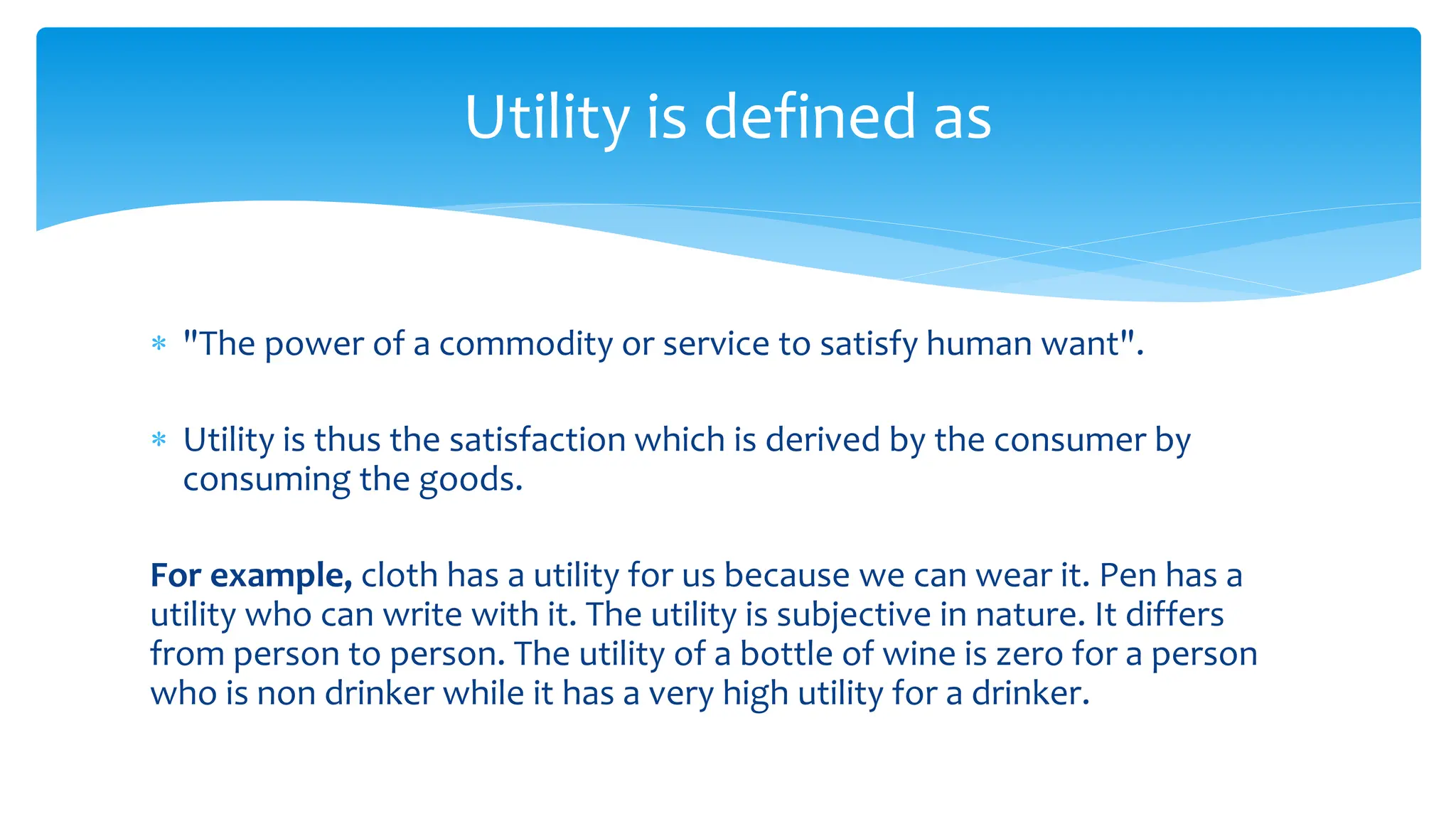
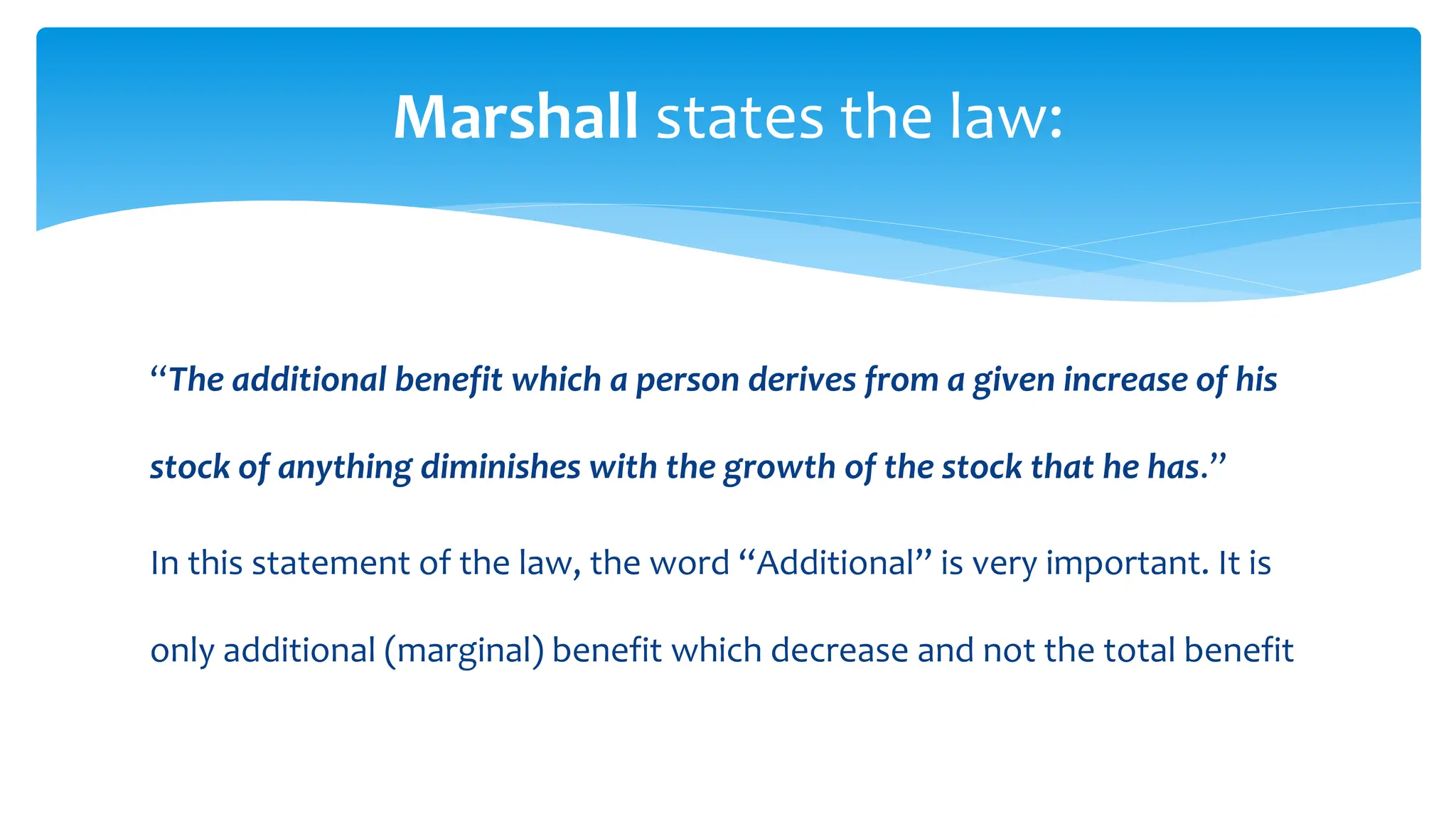
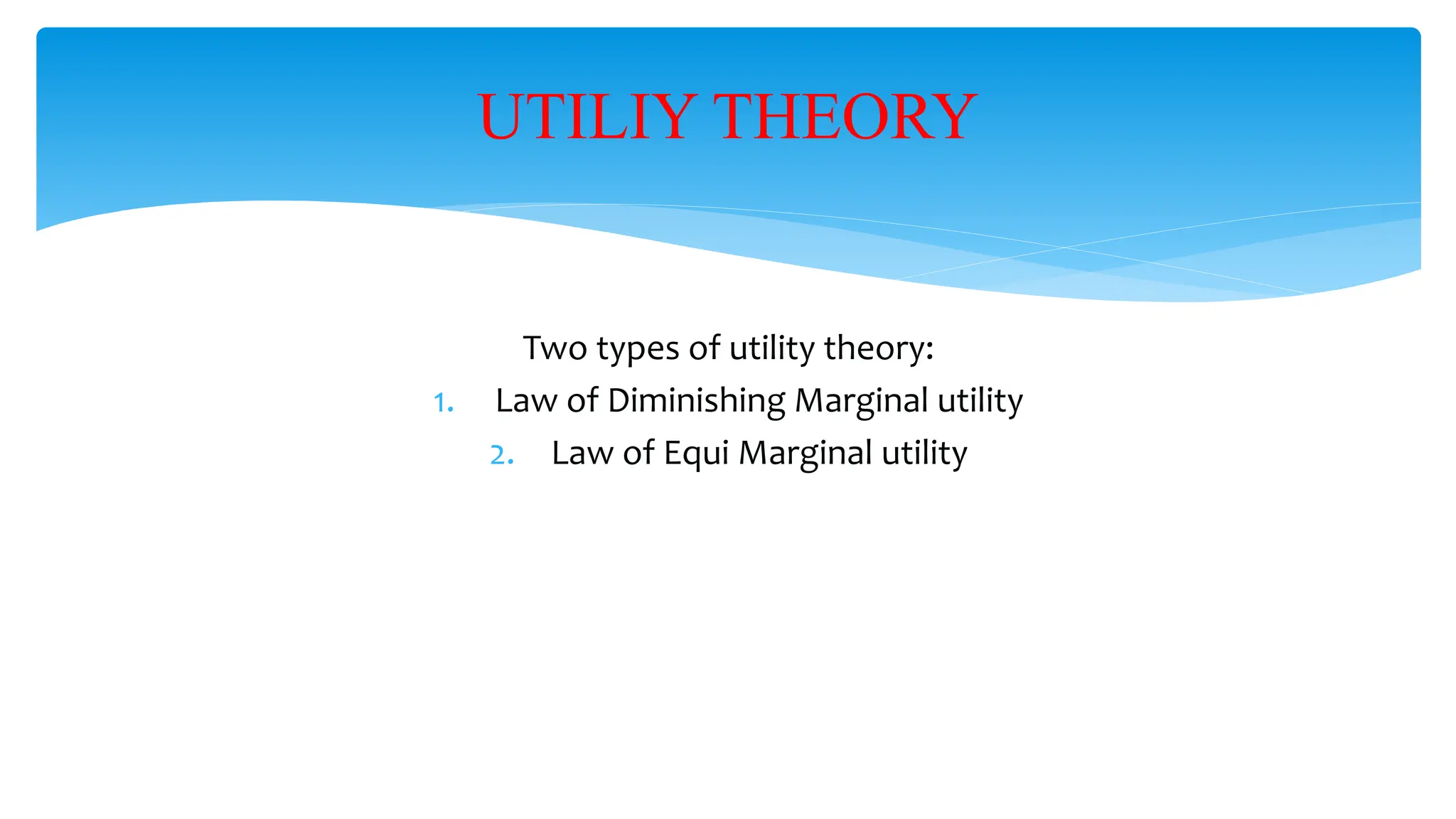
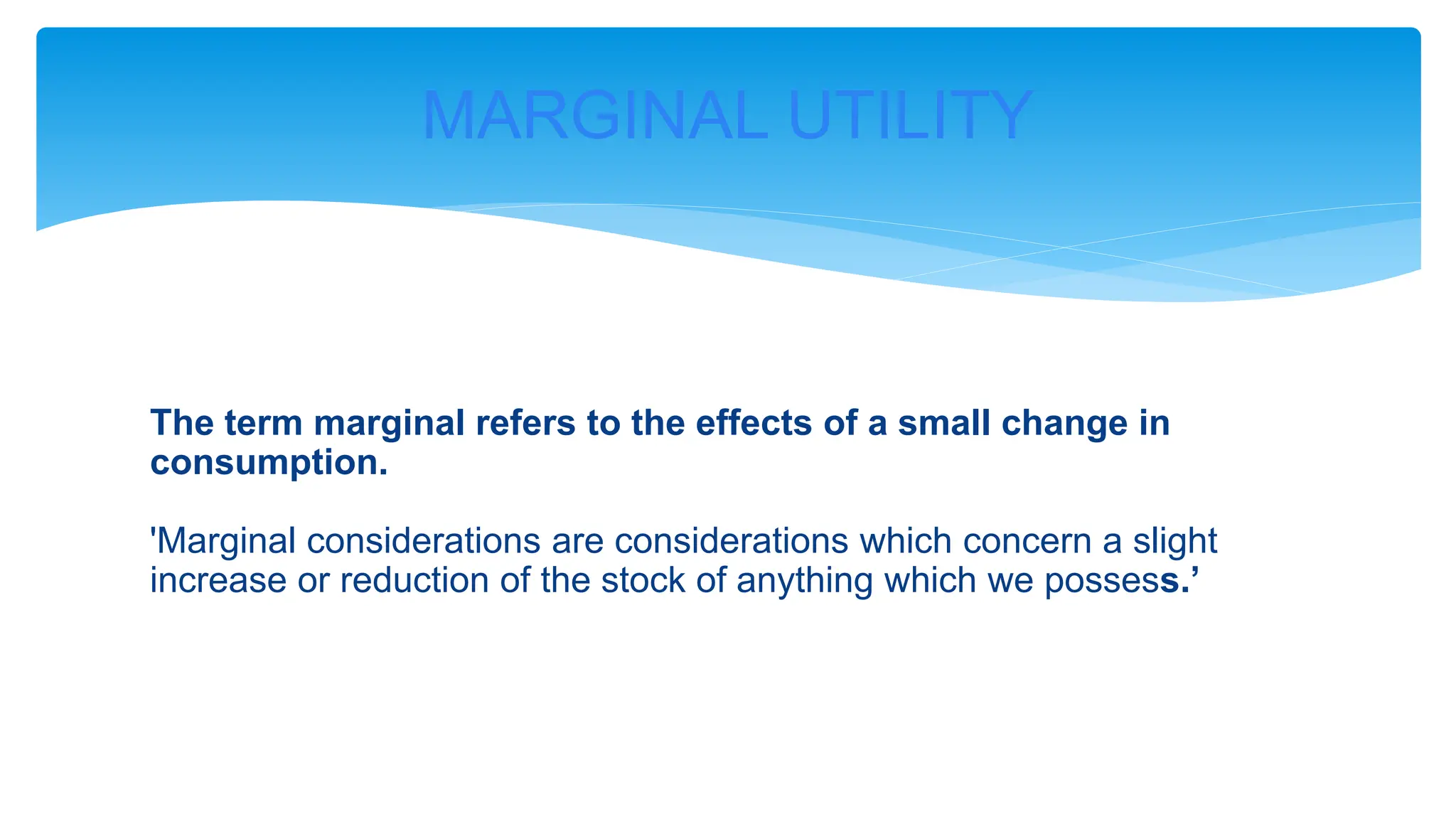
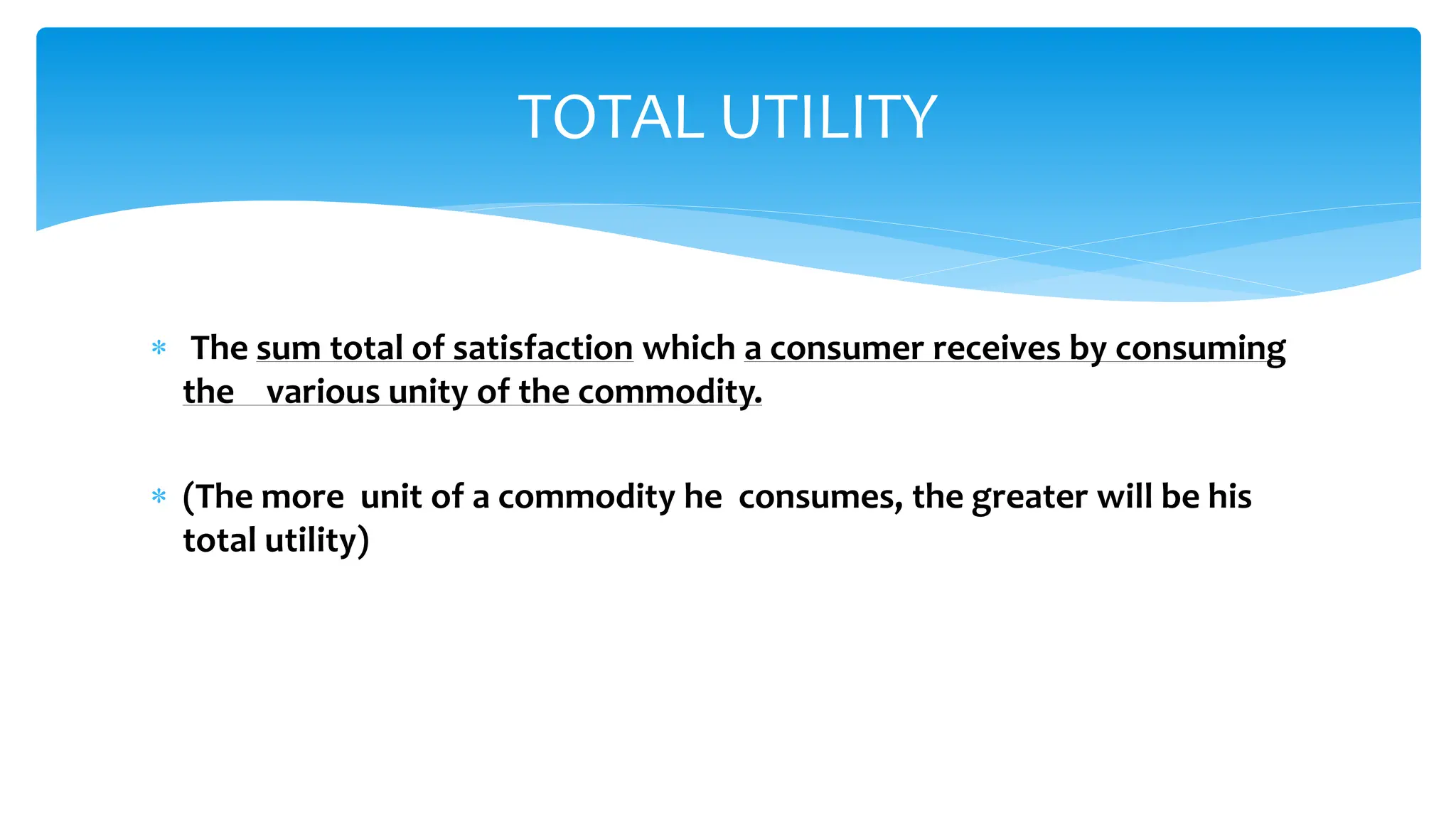
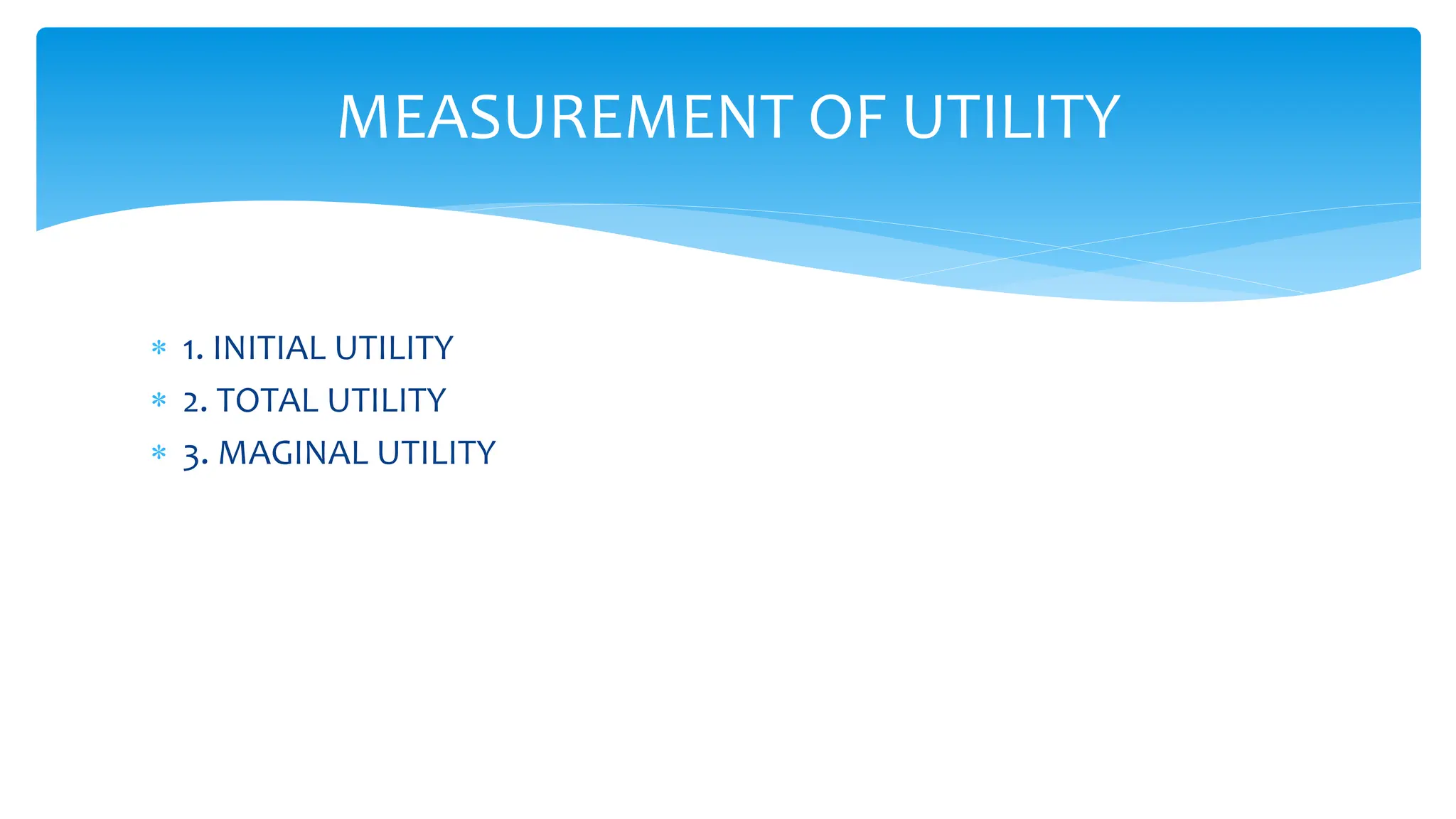
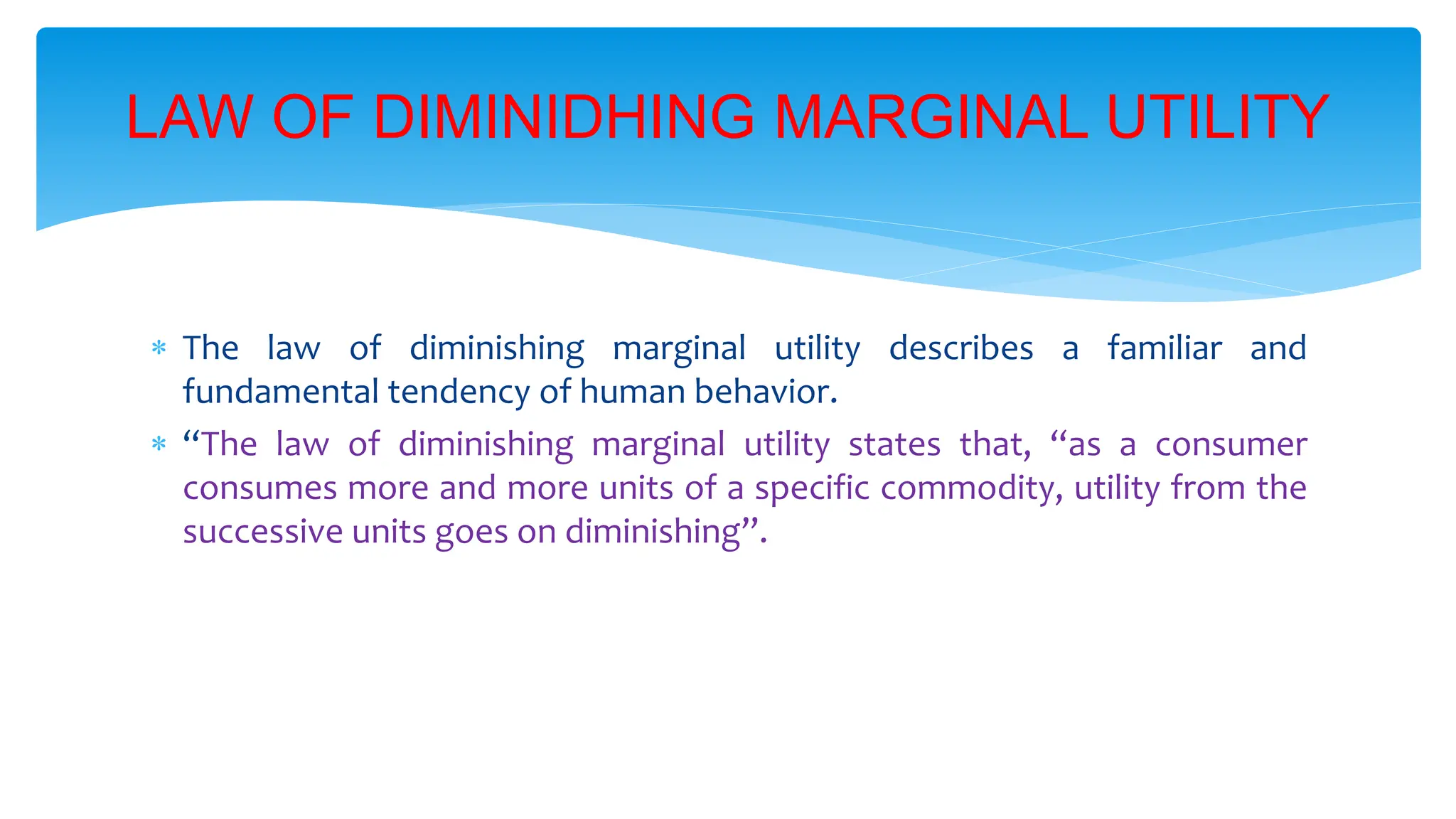
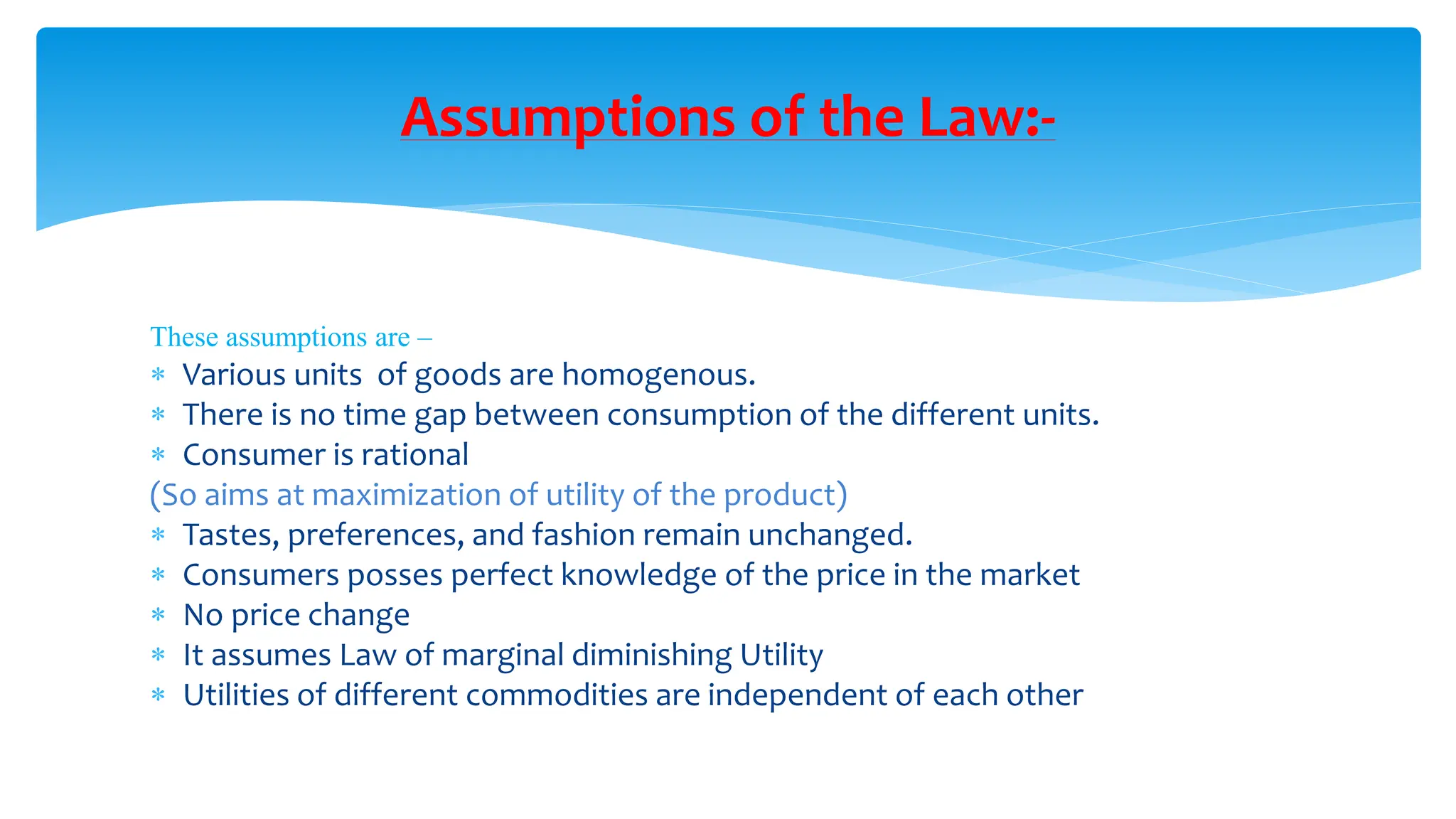
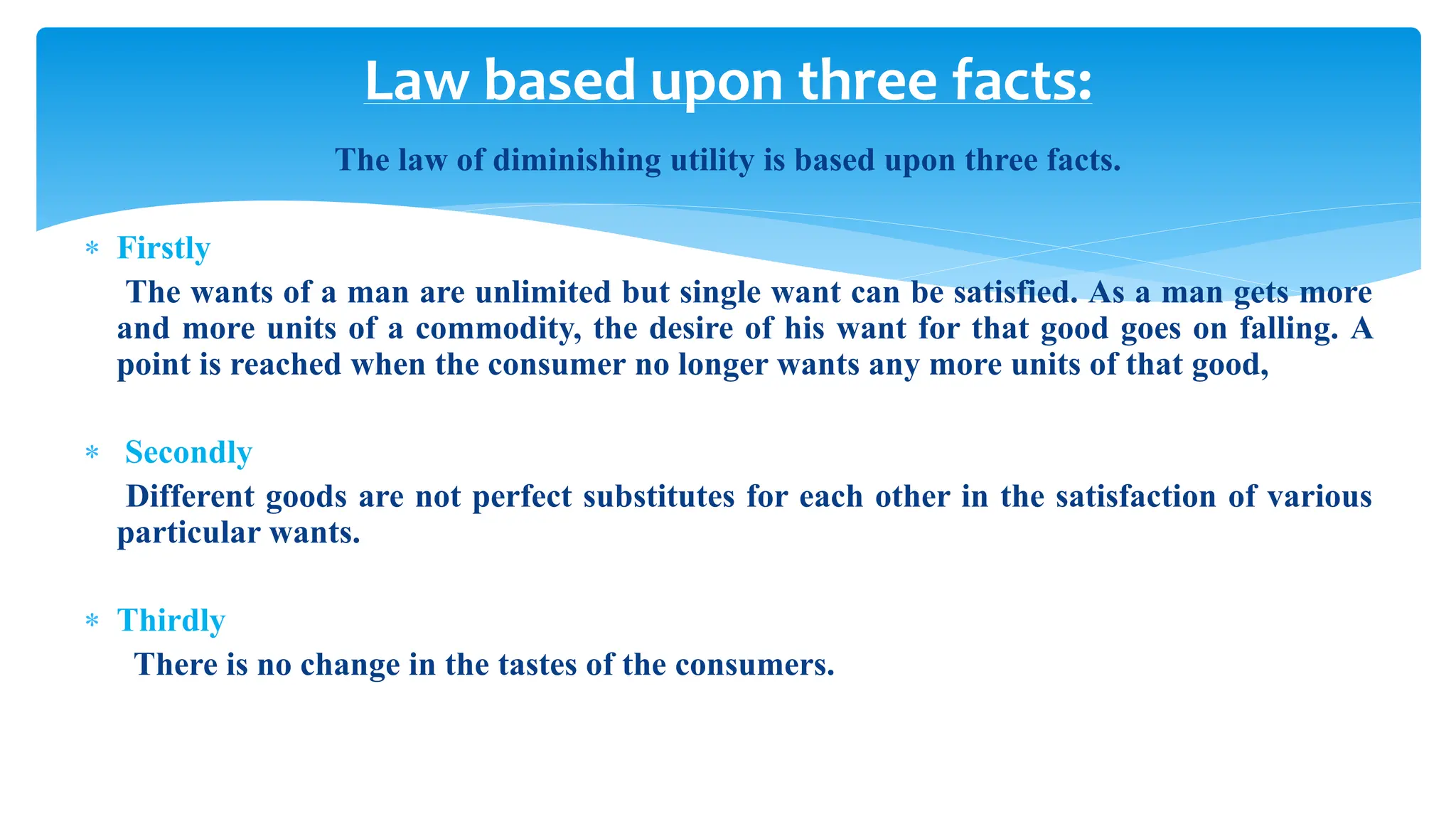
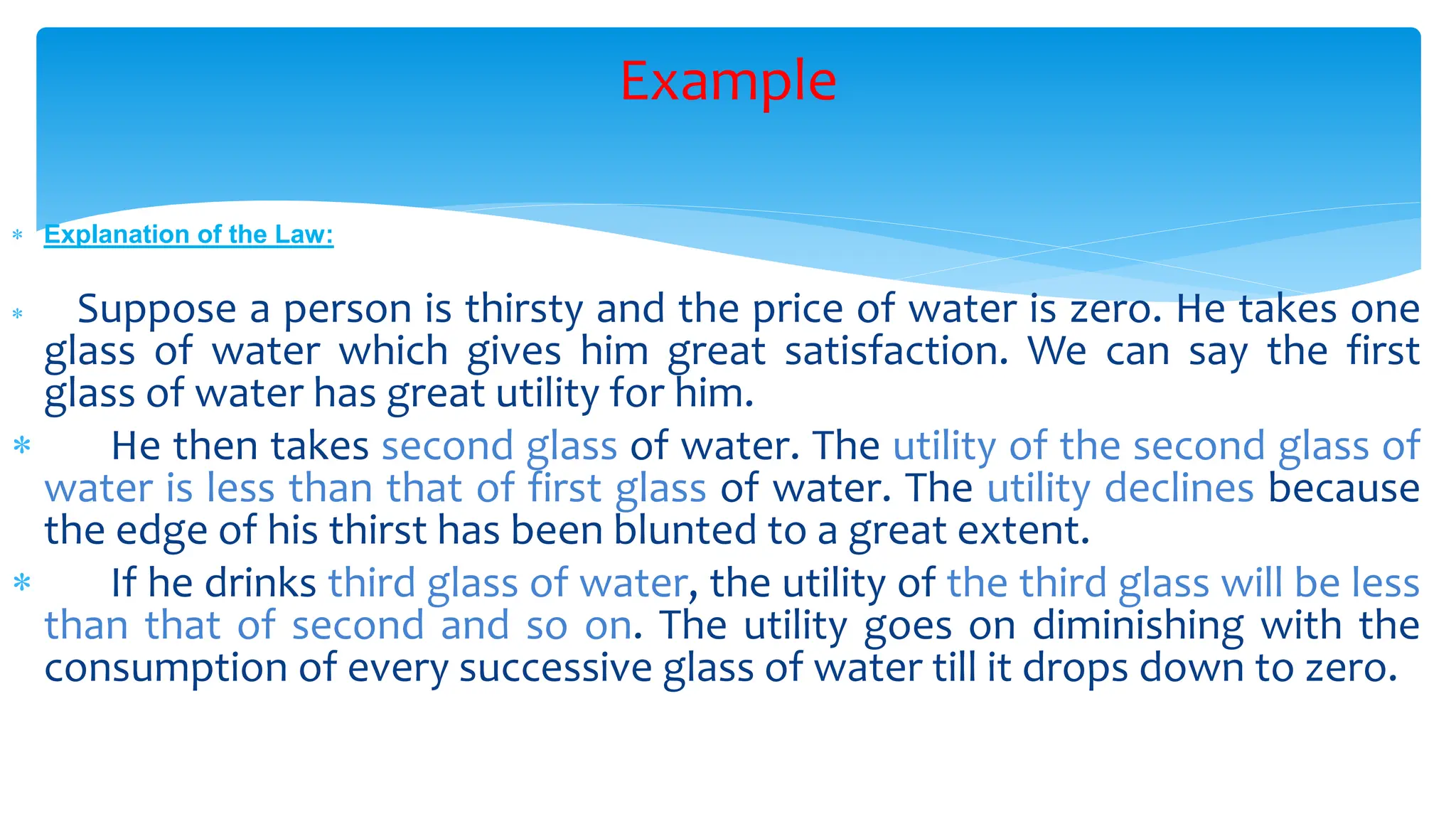
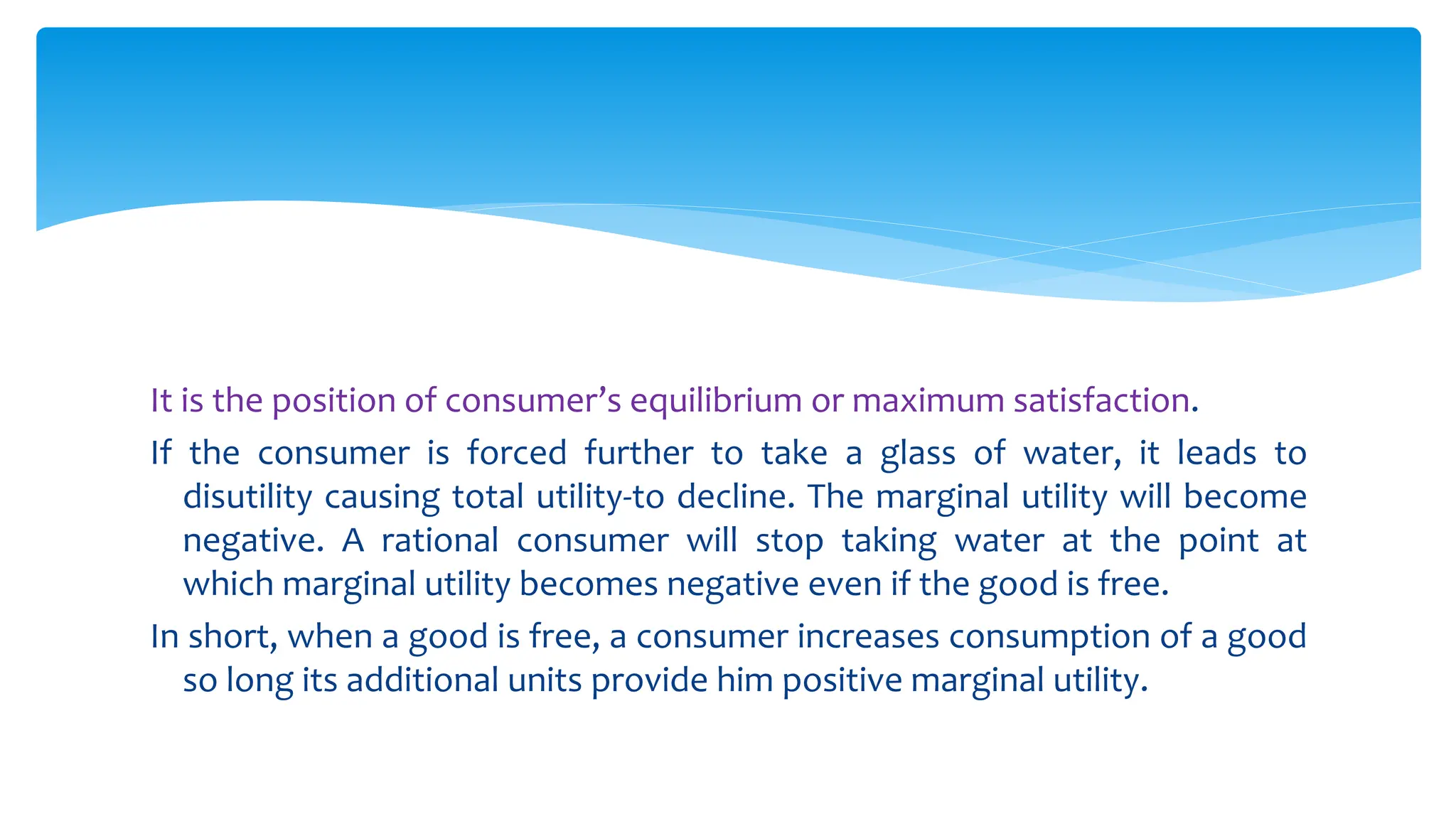

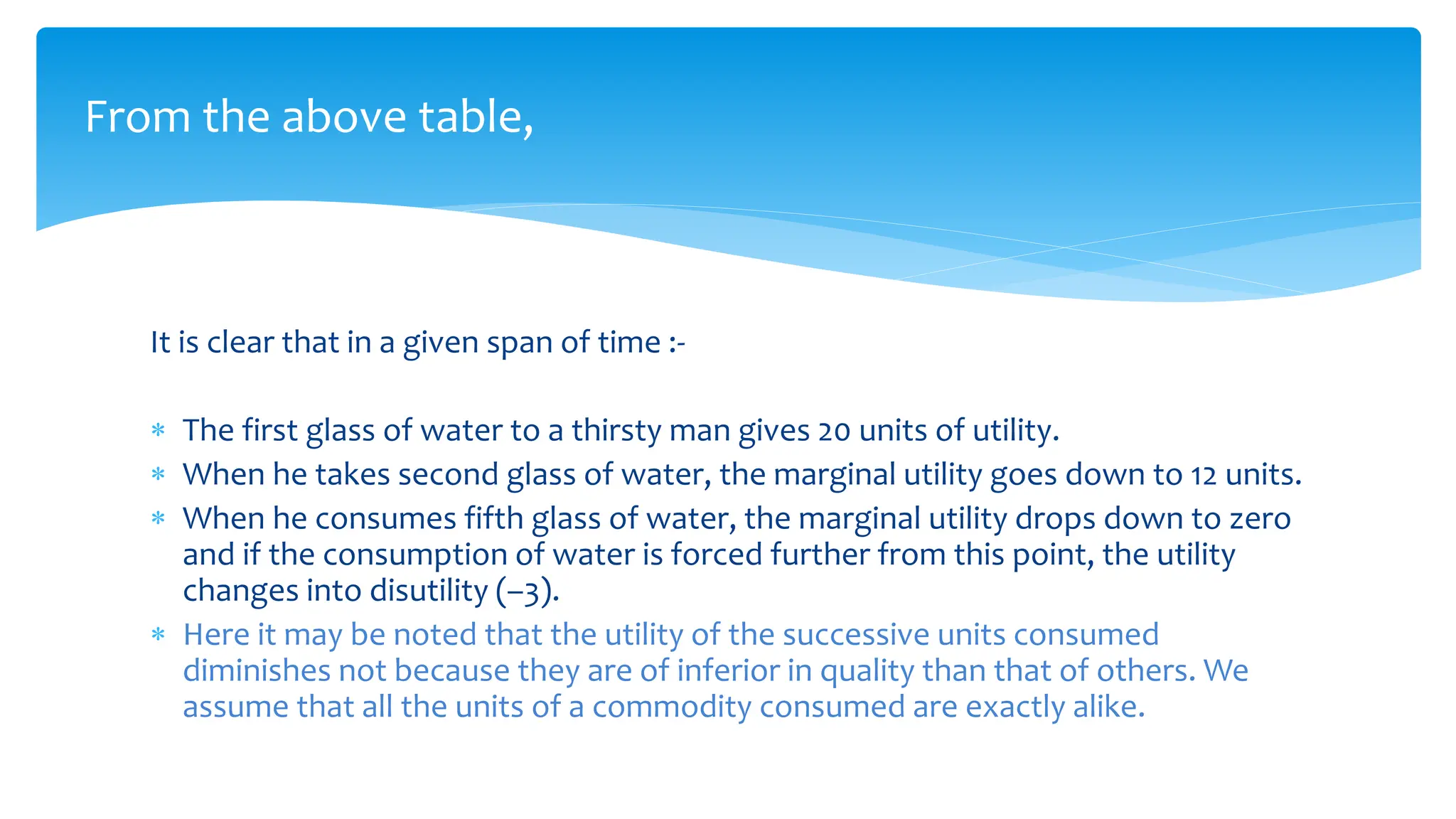
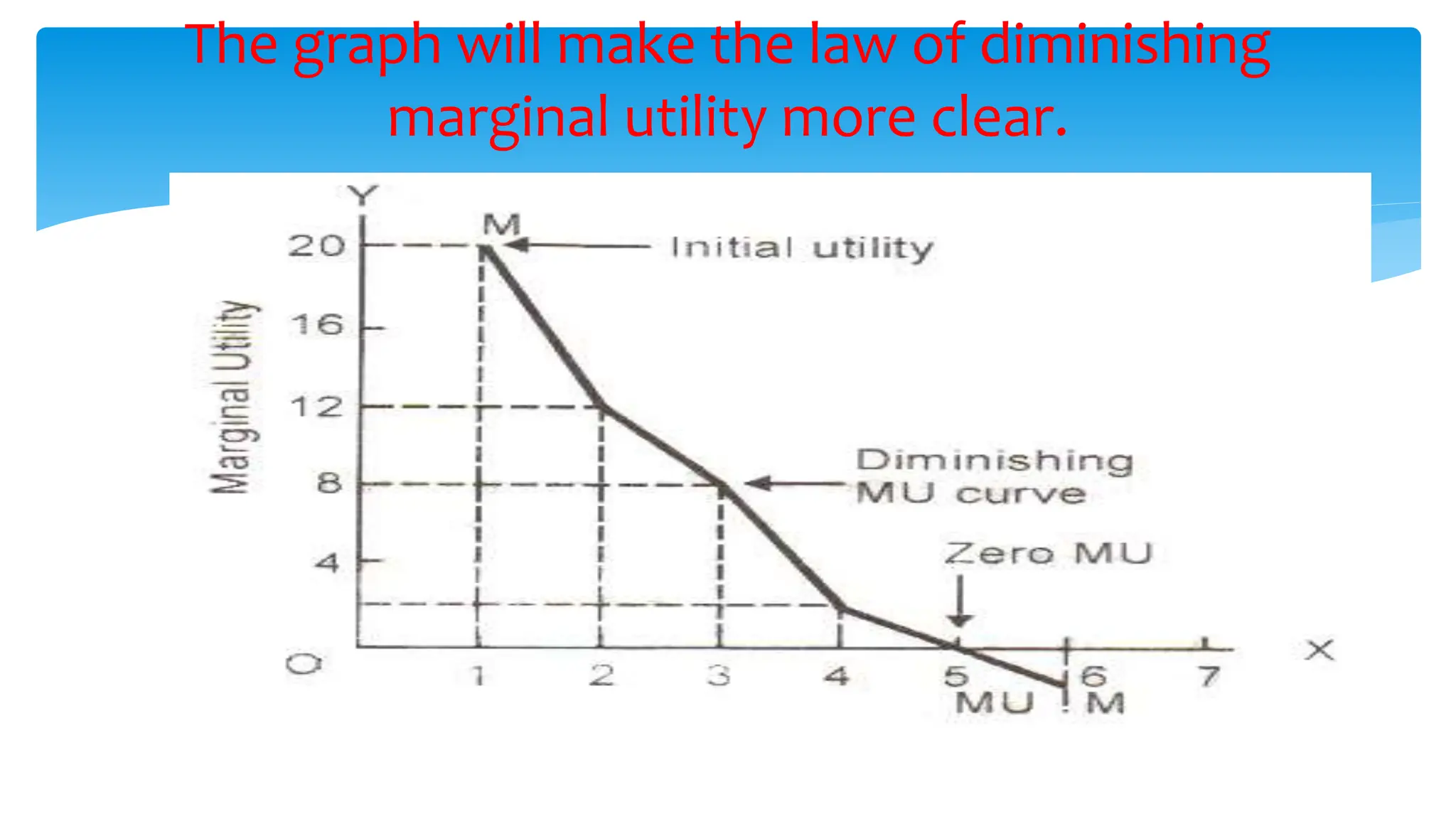
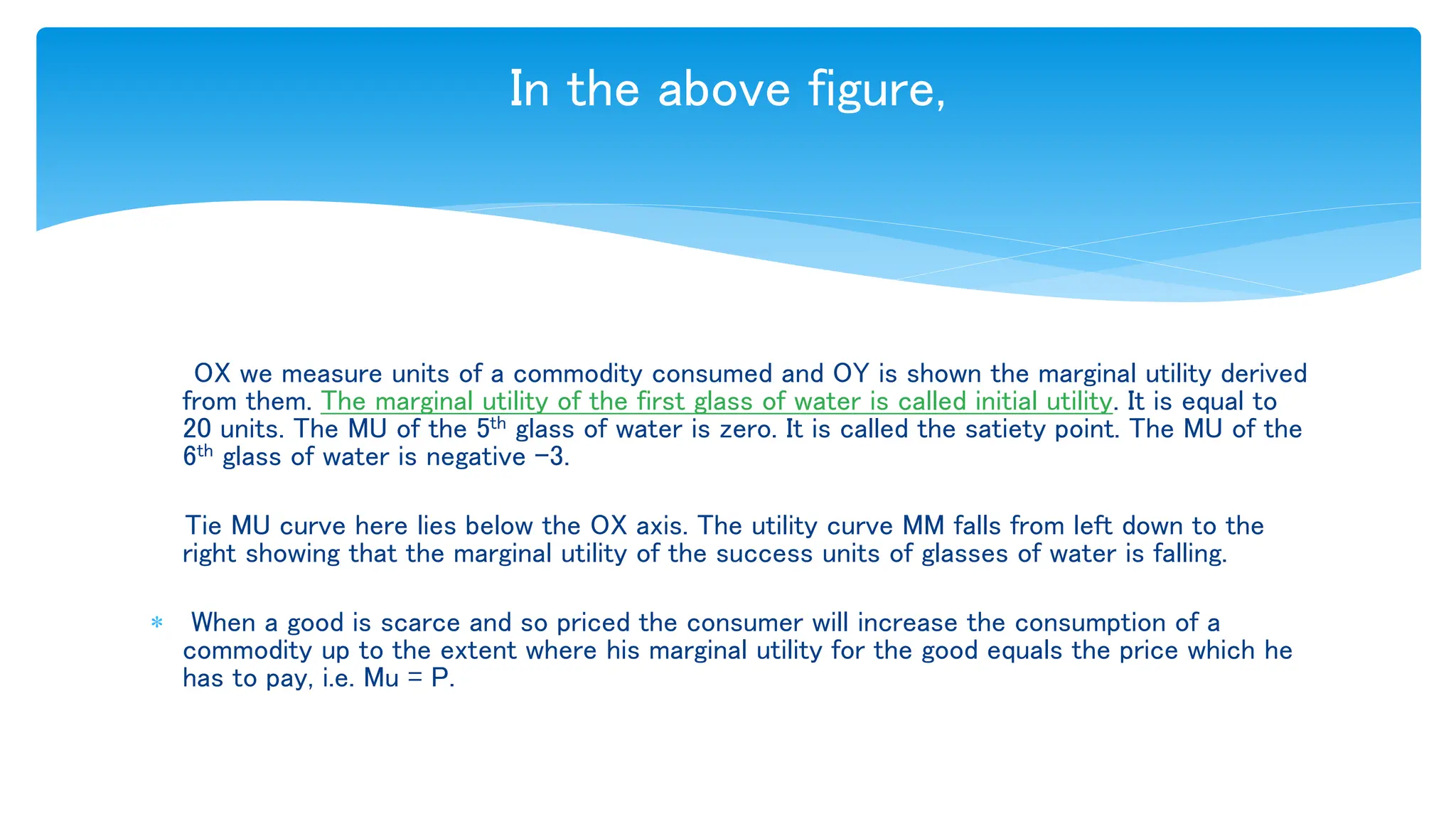
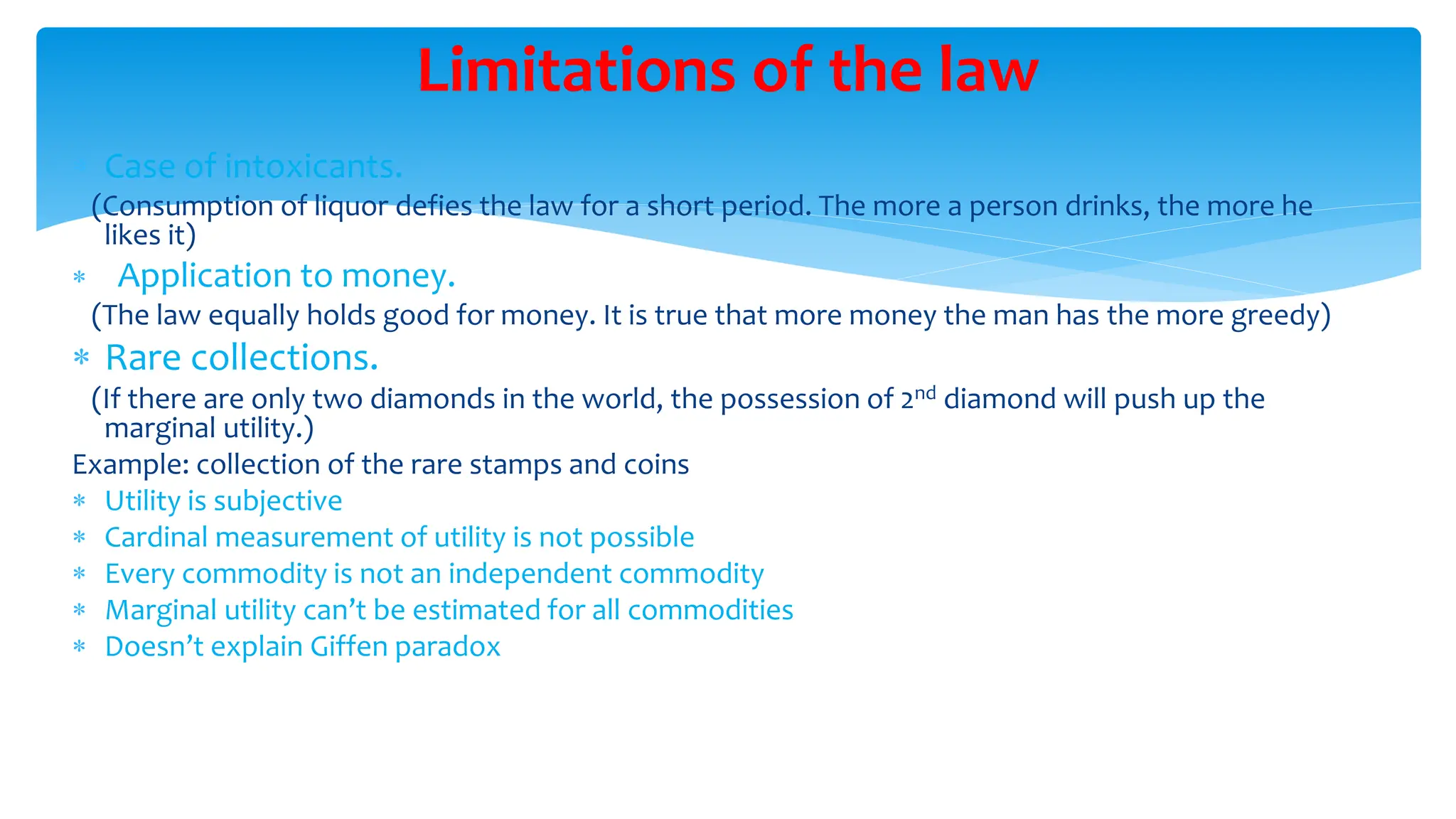
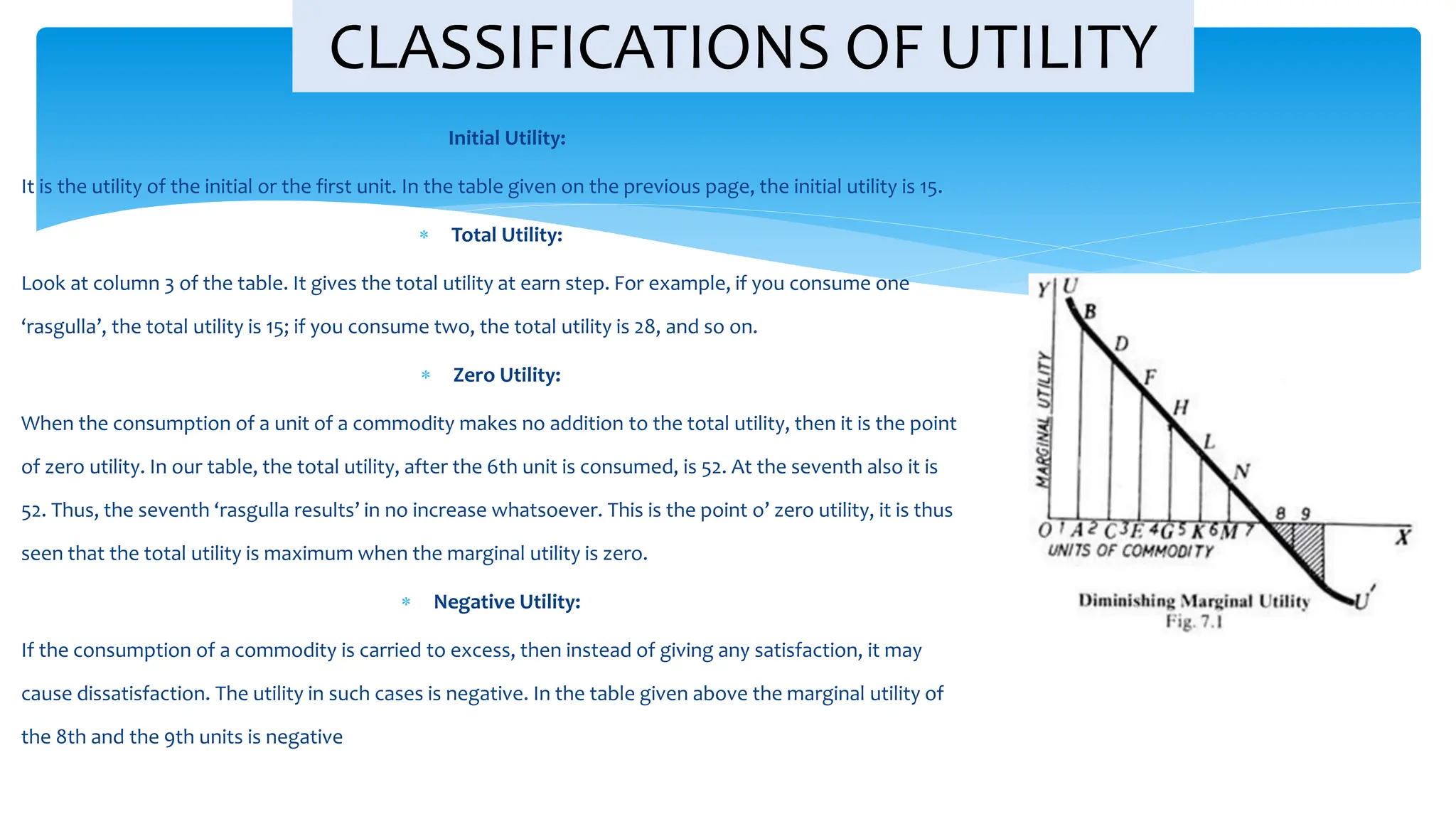


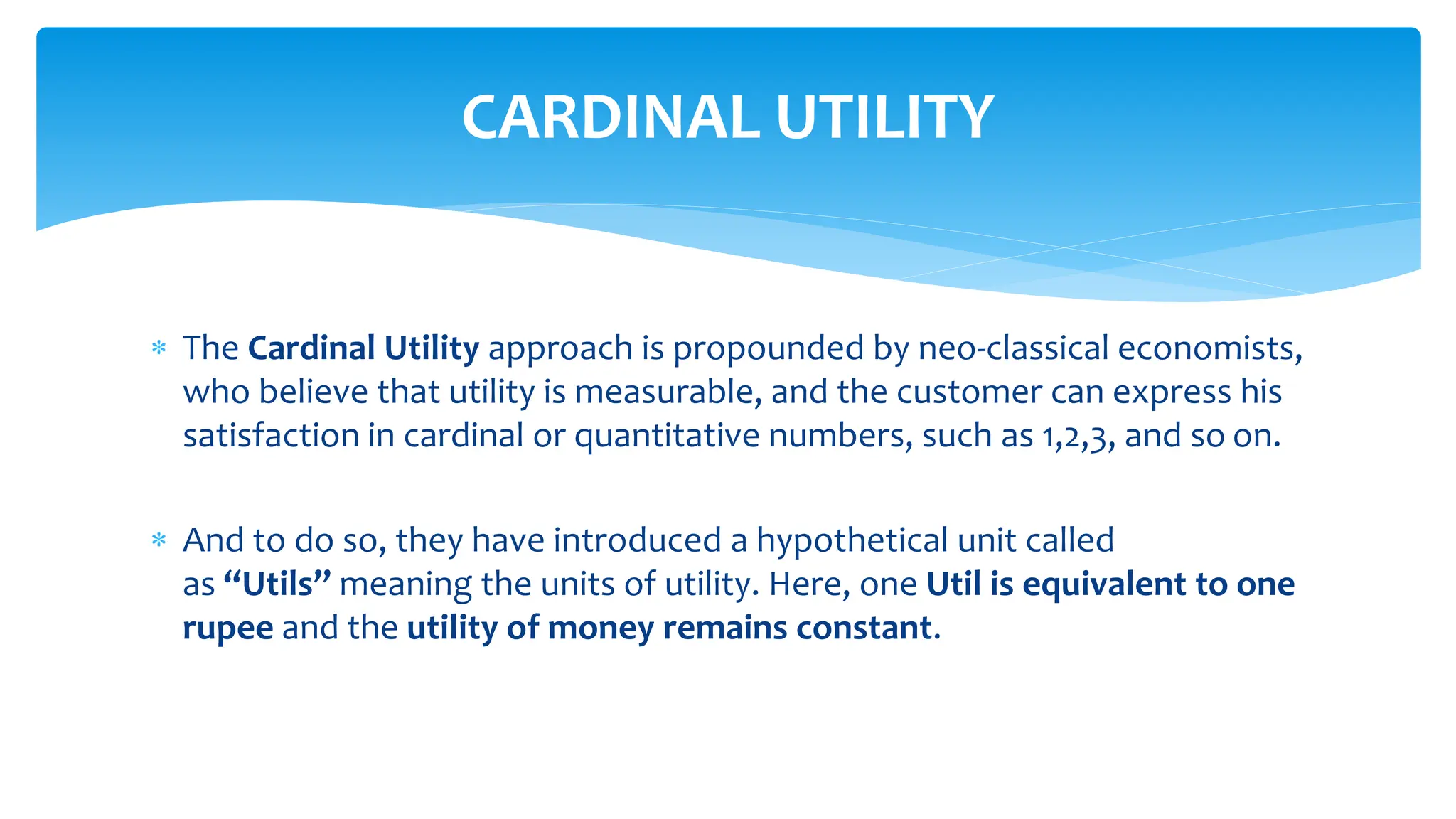
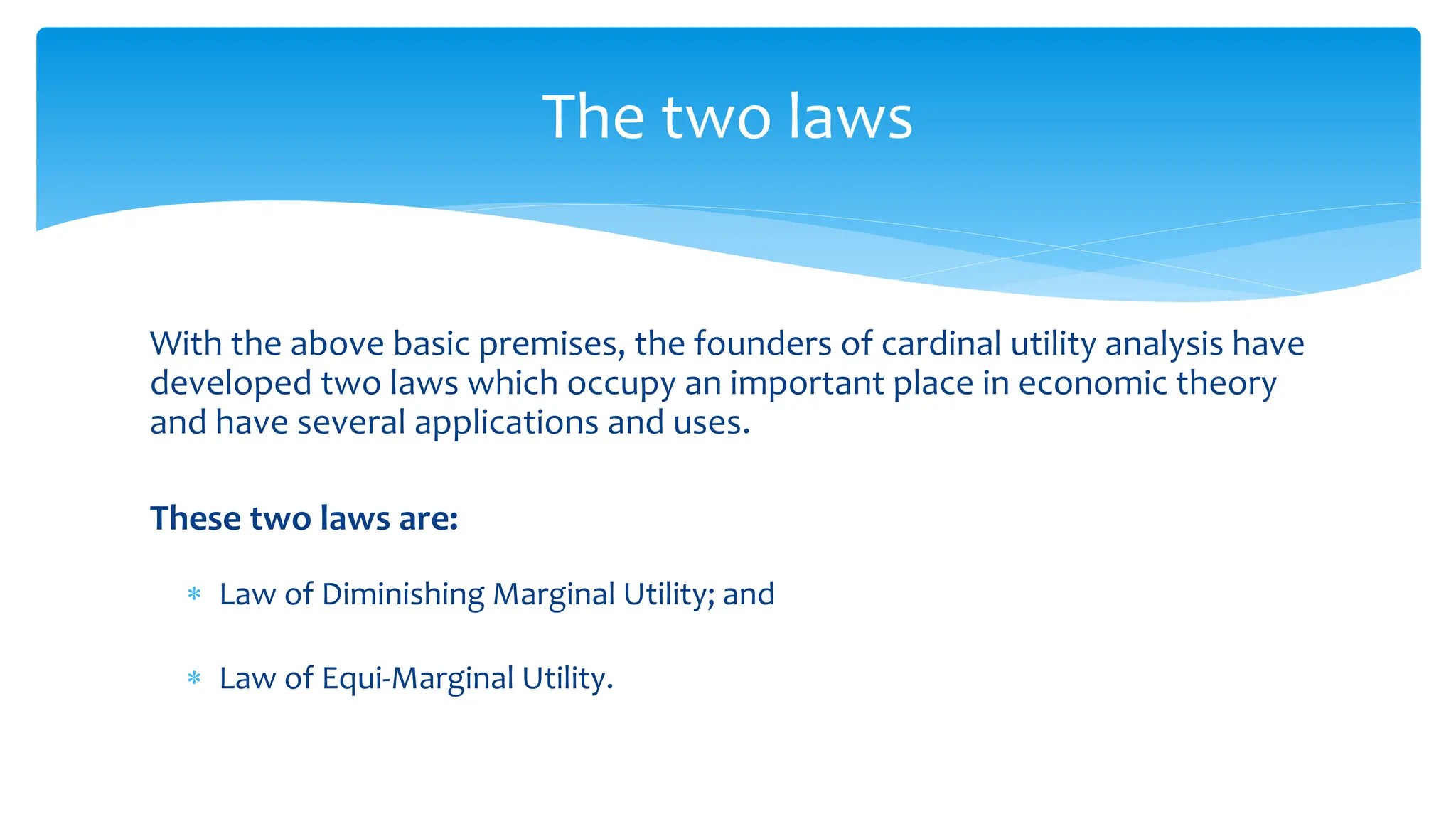
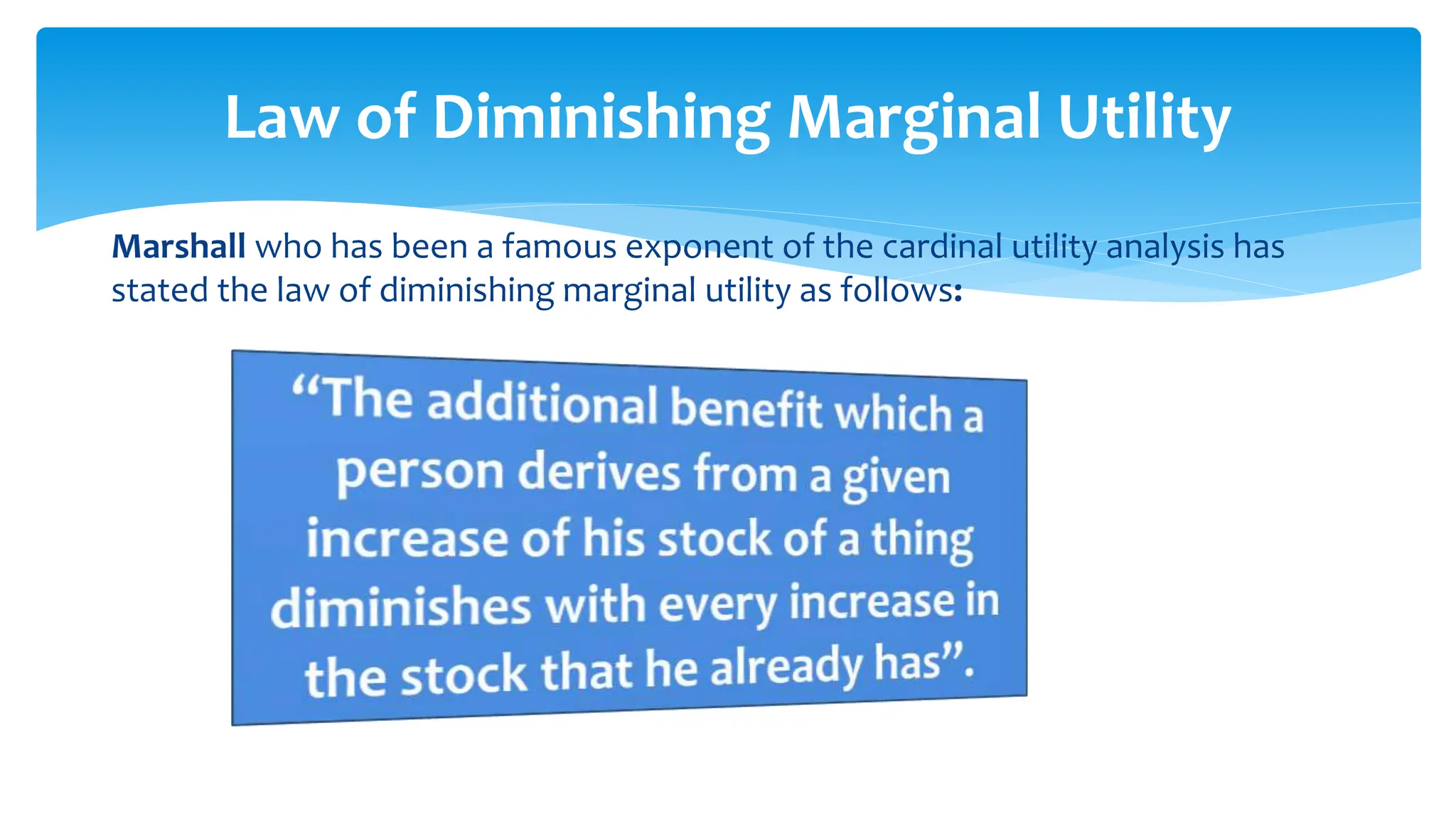
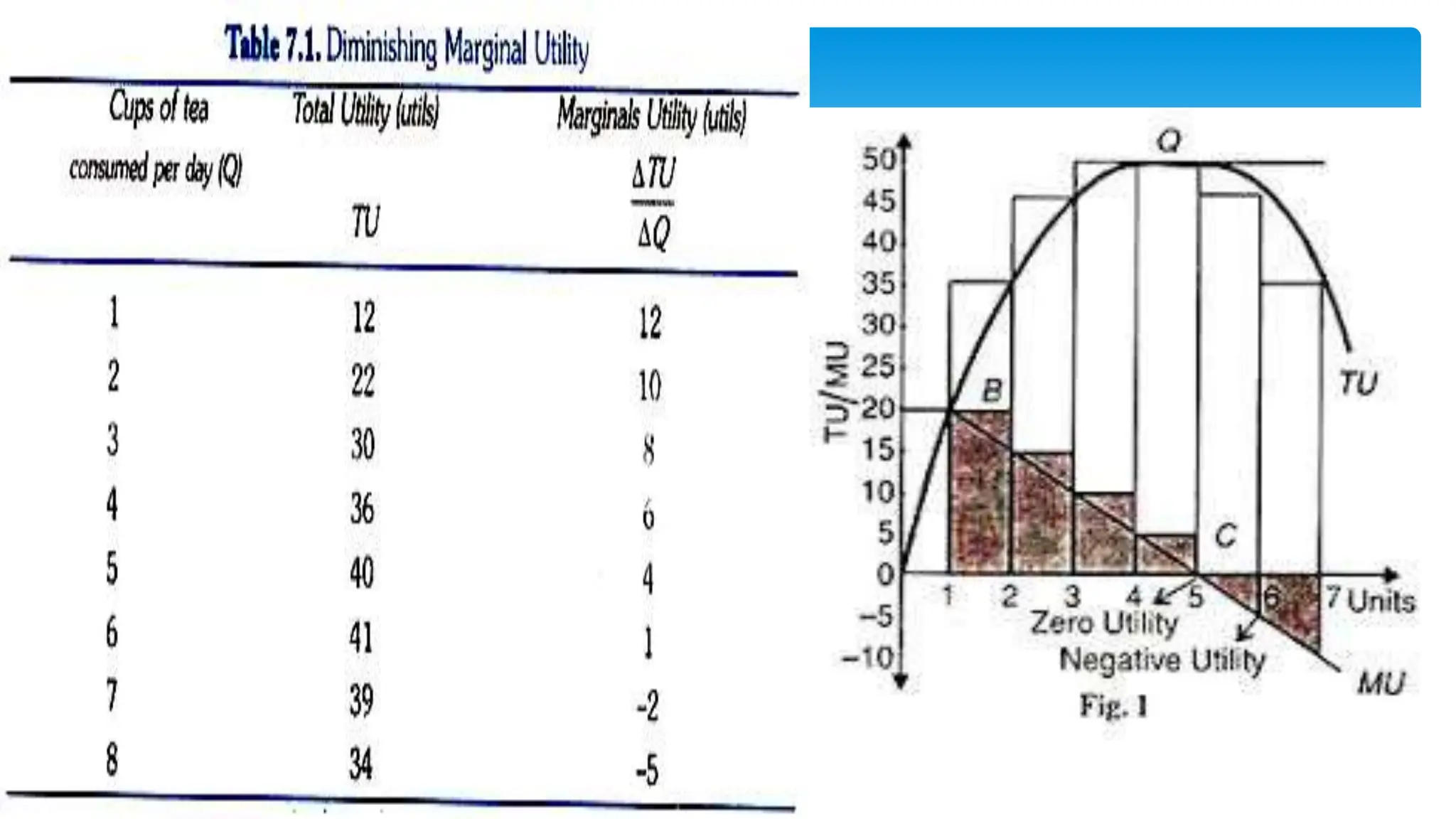
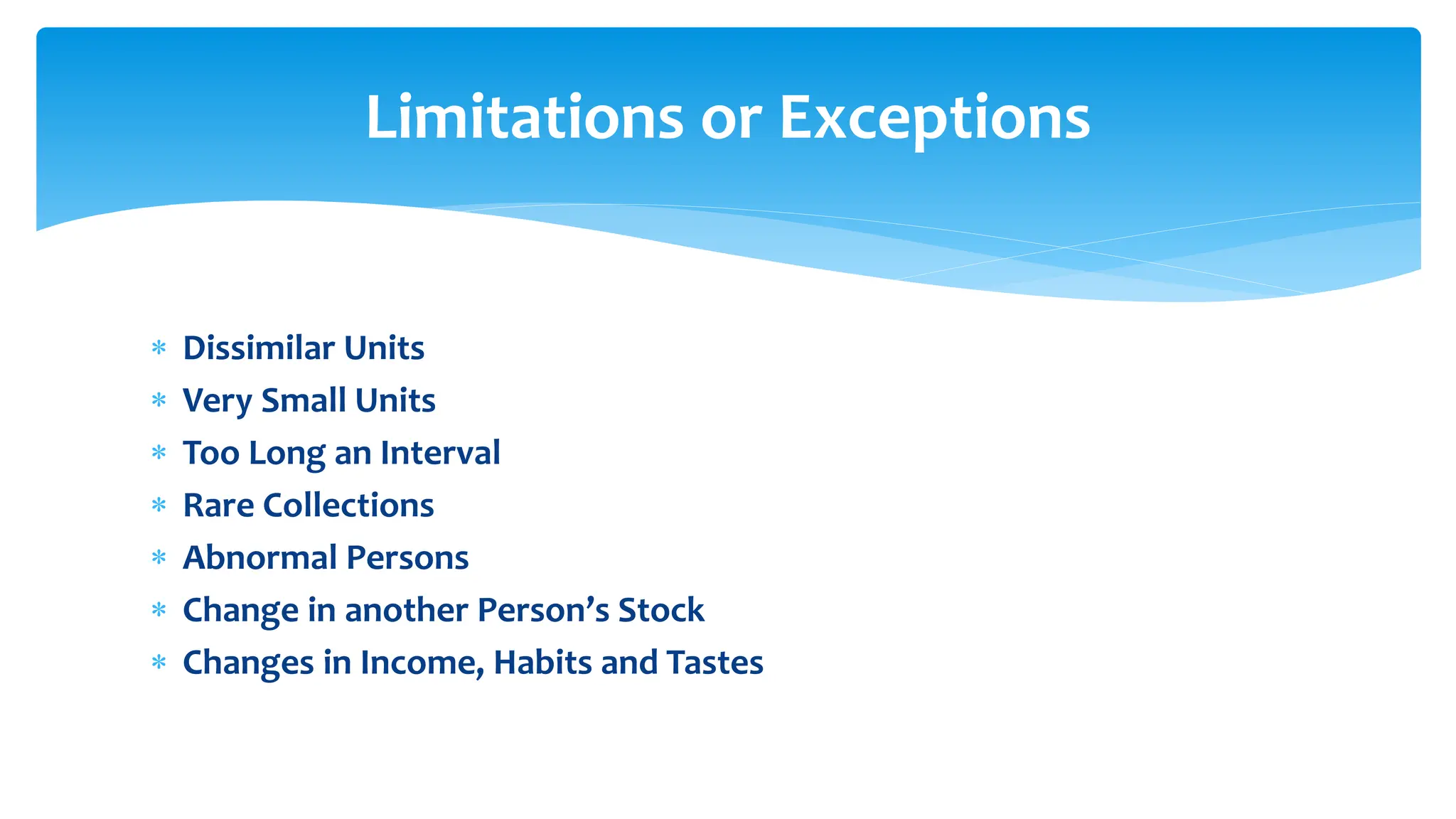

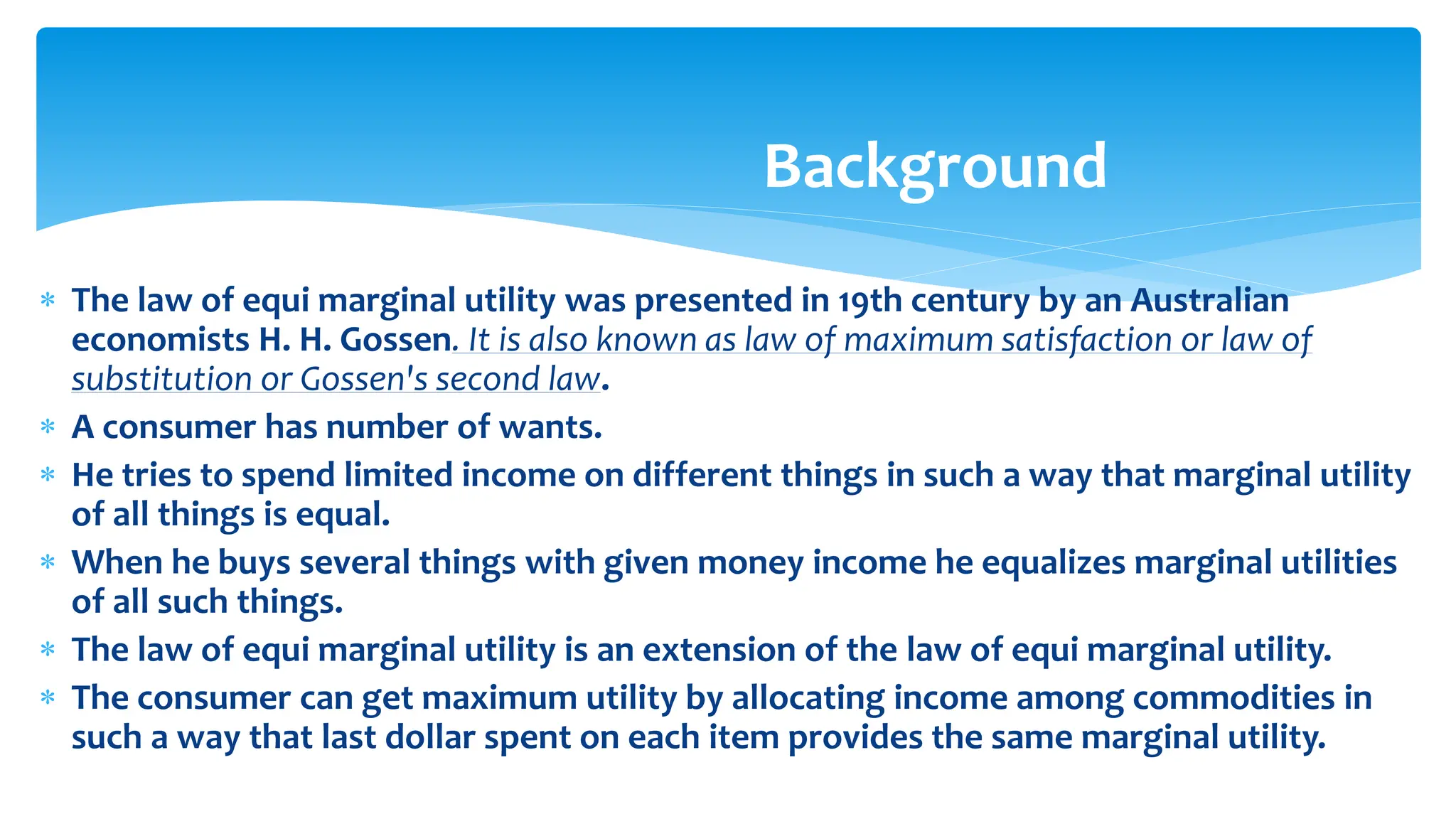

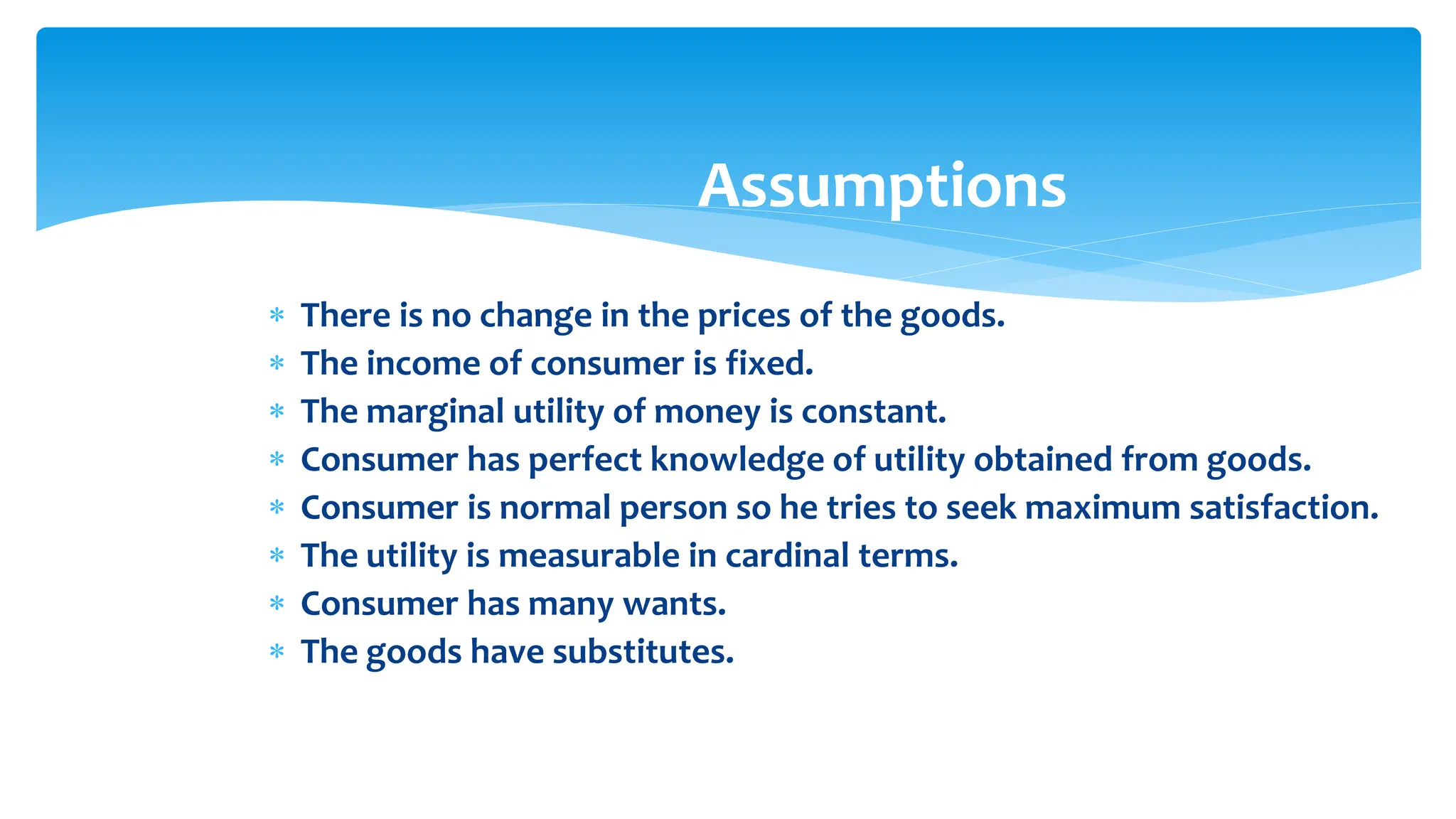
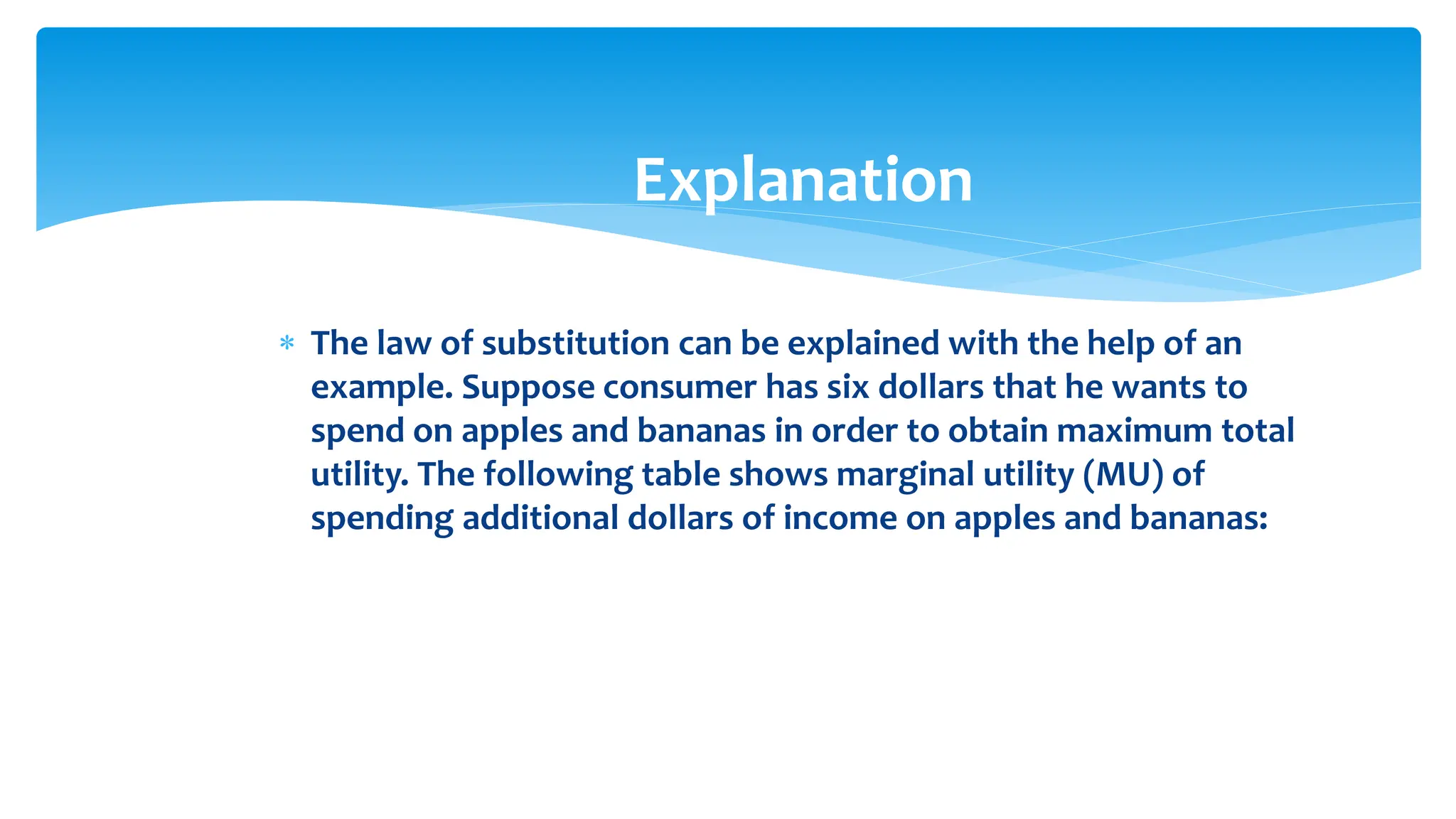

![Schedule
The above schedule shows that consumer can spend six dollars in different ways:
$1 on apples and $5 on bananas. The total utility he can get is:
[(10) + (8+7+6+5+4)] = 40.
$2 on apples and $4 on bananas. The total utility he can get is:
[(10+9) + (8+7+6+5)] = 45.
$3 on apples and $3 on bananas. The total utility he can get is:
[(10+9+8) + (8+7+6)] = 48.
$4 on apples and $2 on bananas. This way the total utility is:
[(10+9+8+7) + (8+7)] = 49.
$5 on apples and $1 on bananas. The total utility he can get is:
[(10+9+8+7+6) + (8)] = 48.
Total total utility for consumer is 49 utils that is the highest obtainable with expenditure of $4 on
apples and $2 on bananas. Here the condition MU of apple = MU of banana i.e 7 = 7 is also satisfied. Any
other allocation of the last dollar shall give less total utility to the consumer.](https://image.slidesharecdn.com/utilitytheory-240331185346-2ff6bc4c/75/utility-cardinal-theory-in-economics-ppt-32-2048.jpg)
